Worst-Approval-Ratings-EVER: EMPEROR NERO!! (and Caligula too)
THE COUNCIL OF NICAEA – A Prelude to Darkness…
THE FALL OF CONSTANTINOPLE
CLEOPATRA – Last Pharaoh of Egypt…
CAESAR – Republic to Empire
The (rest of the) Web Series!
ALEXANDER – The Great? (Part 1)
TOP 5 WORST ROMAN EMPERORS!
TOP 5 WORST ROMAN EMPERORS!
Ah, The Roman Empire. The largest Empire of the ancient world, once thought too big to FAIL (too big, in fact, to govern). Back when real men killed each other in arenas for sport, and life-long rulers were assassinated by the dozen.
Now don’t get me wrong, there are plenty of good things that came out of Rome’s rule during this period: the Republican form of government, the concept of modern law, road systems throughout Europe, the leap year, Roman numerals, the alphabet, the invention of concrete, numerous other architectural innovations, etc
 But it wasn’t all peaches and cream, especially for the early Christians: Rome’s national scapegoats, well that is until Christianity became the state religion, and every other faith was subsequently outlawed and persecuted to death (but that’s another story entirely).
But it wasn’t all peaches and cream, especially for the early Christians: Rome’s national scapegoats, well that is until Christianity became the state religion, and every other faith was subsequently outlawed and persecuted to death (but that’s another story entirely).
A lot of Americans today like to complain about our often two-faced politicians, but hey at least our Elected leaders don’t put our heads on spikes when we don’t agree with them. From Tiberius to Diocletian, the Roman Emperors were known to do that and sooo much worse.
The Roman Emperors ruled Rome with an iron fist, and answered to no one. (The title ‘Caesar’ by the way was later adapted by the German ‘Kaizers’ and the Russian ‘Czars’) There were a few good rulers like Marcus Aurelius, the Philosopher-King (think JFK meets Gandalf), but the majority of them were just plain bad. Then there was Elagabalus, who was just plain annoying.
 It all started with this one dude by the handle of Julius Caesar. At the time Rome was a Republic with a Senate and the like, but during a time of crisis the people gave temporary, unlimited, power to a single ruler (Pontifex Maximus), who decided he liked running things all by himself, so promoted himself to the newly created position of Dictator-for-Life (which is kind of like asking a Genie for unlimited wishes). It took 60 old guys in togas to take Caesar down, in a slow motion montage of epic Shakespearian back-stabbing betrayal, no less.
It all started with this one dude by the handle of Julius Caesar. At the time Rome was a Republic with a Senate and the like, but during a time of crisis the people gave temporary, unlimited, power to a single ruler (Pontifex Maximus), who decided he liked running things all by himself, so promoted himself to the newly created position of Dictator-for-Life (which is kind of like asking a Genie for unlimited wishes). It took 60 old guys in togas to take Caesar down, in a slow motion montage of epic Shakespearian back-stabbing betrayal, no less.
The Romans didn’t learn their lesson though, because they then appointed his nephew to replace him. A guy called Octavian, stepped in to Caesar’s shoes… er sandals… He immediately changed his name to Augustus and declared himself Emperor of Rome and well… things kinda went downhill from there. Following Augustus’s demise, his sole surviving heir, Tiberius, seized absolute control and this sort of became a tradition.
Interesting fact about the Emperors of Rome: over the course of FIVE Centuries (27 BC – AD 476) and 147 emperors, only 2 of them died of natural causes, almost all the others were assassinated! … and some with good reason!

![Didius Julianus]() DIDIUS JULIANUS 193-193
DIDIUS JULIANUS 193-193
Didius Julianus… Not much to say about him honestly, he was only in power for about 9 weeks in the year 193 CE. He bid his way into power after the assassination of Pertinax, which directly led to “the Year of the Five Emperors” and a bloody civil war that waged for years after. If becoming Emperor through purchasing the throne wasn’t endearing enough, Julianus did a number of things that made himself even less likeable, namely devaluing the currency.
Ultimately, he was ousted and sentenced to death by his successor, Septimius Severus.
- CONSTANTINE 306-337
Emperor Constantine aka Constantine the Great aka Saint Constantine is a controversial figure to say the least.

He’s often cited as one of the most important figures in the history of Christianity, but he was also a greedy ego-centric maniac who practically brought about the collapse of the Roman Empire and the Dark Ages that followed.
You see, contrary to popular belief, Constantine wasn’t a Christian, by all historical accounts, and yet he was the one who appointed the Council of Nicaea, where they edited the biblical texts into one complete and official document (while burning all the gospels that didn’t fit in with their version), and declared the Trinitarian Doctrine as the official state religion in 325 AD.

Constantine taking out his rivals for the throne.
At the time, Rome was ruled by four emperors, but Constantine wanted the spotlight all to himself, so through cunning manipulation eliminated his rivals one by one, consolidating the might of the Roman Empire under his will and putting the heads of his enemies’ on spikes. He also was a paranoid psychopath who killed his own wife and son.
His worst offence though?
For no reason whatsoever, Constantine up and decided to move the Capitol of the ROMAN Empire from Rome to his newly established city, which he then named after himself: Constantinople. This led to an eventual schism between the East and Western halves of Rome, which many historians believe was the direct catalyst for the collapse of Rome within the following century.

Sup girl?
- COMMODUS 180-192

Emperor Commodus gets such a bad rep that he’s even the villain of Ridley Scott’s “Gladiator”! Perhaps part of the reason he’s so universally reviled by historians is that he followed in the strides of one of the greatest rulers in all of Roman history, Marcus Aurelius. But it’s not just that he lived under his father’s shadow, it’s almost as though Commodus was attempting to sabotage his career out of spite.
Either way, there is no doubt, Commodus sucked at his job.
 Despite being rather frail, Commodus constantly insisted on being depicted as Hercules. He constantly boasted about his greatness, while his people suffered from his lack of political initiative. Instead of tending to actual matters of importance, Emperor Commodus decided instead to obsess over the gladiatorial games, which he even “competed” in, winning every match by default.
Despite being rather frail, Commodus constantly insisted on being depicted as Hercules. He constantly boasted about his greatness, while his people suffered from his lack of political initiative. Instead of tending to actual matters of importance, Emperor Commodus decided instead to obsess over the gladiatorial games, which he even “competed” in, winning every match by default.
Towards the end of his reign, he would start every morning in the Colosseum by killing hundreds of helpless animals with javelins and arrows. Meanwhile, the Empire began to fall into economic disarray due to grain shortages, worsened by his extravagant Plebeian games. Much of what Commodus did throughout his rule, was to undo all the good that his father had accomplished.
Eventually the Senate got tired of his bull crap and attempted to poison him… however, when that didn’t work they just hired one of his favorite gladiators to assassinate him instead.
- CALIGULA 37-41 CE

The Roman Empire has a thick directory of bad rulers, but the descendants of Julius Caesar were right at the top of the shit list. The Julio-Claudian Dynasty (or crime family) continued for generations with the likes of horrible bastards like Augustus and Tiberius, but none were quite as horrifying as the notorious Nero… however Caligula could give him a run for his money.
 Most people have at least heard of Caligula, a name synonymous with excess debauchery. This sex-crazed lunatic took abuse of power to a new and disturbing level. Caligula was certifiably nuts. Among his many crazy en-devours he once appointed his horse to the political position of proconsul.
Most people have at least heard of Caligula, a name synonymous with excess debauchery. This sex-crazed lunatic took abuse of power to a new and disturbing level. Caligula was certifiably nuts. Among his many crazy en-devours he once appointed his horse to the political position of proconsul.
Like many a Roman Emperor, Caligula applied for the job by attempting to have the previous guy killed. He was a paranoid schizophrenic who thought himself a literal god, had a tendency to bathe in blood, and was known for draining the budget on massive orgies. He publicly tortured and killed people for his own amusement. One of his worst atrocities took place at the Circus Maximus where they’d run out of prisoners to kill, so he ordered the first five rows of those in attendance slaughtered.

Caligula once marched his soldiers on a campaign against Britain, but when they arrived at the English Channel, something truly bizarre happened: Caligula ordered his legions to attack the water! After splashing about and slashing the waves with their swords in confusion, Caligula recalled his troops in order to help him collect sea shells as the spoils of war to bring home to Rome in triumph.
Eventually his own Praetorian Guards got sick of his bull and straight up killed him, they left him in the street to rot where dogs eventually ate his corpse.
Claudius, Caligula’s laid back uncle, was the guy who next took up this cursed position actually did a decent job… that is until his niece / wife (Agrippina) poisoned him. Agrippina was one of the most ruthless women in the history of Rome, and single-handedly managed to orchestrate her son, Nero’s rise to power.
Unfortunately for everyone her plan backfired with disastrous results…
- NERO 54-68 CE

Nero was a monster, pure and simple. The guy wasn’t just psychotic, he was downright sadistic. Nero followed in Caligula’s crazy footsteps, but took things a step further. In addition to all the over-the-top orgies and rampant executions over petty annoyances, Nero was so self absorbed that he forced people to attend his awful poetry readings which would often last for hours!
 In addition, Nero had his mother killed, kicked his pregnant wife to death, heavily taxed the citizens to pay for a massive (naked) golden statue of himself, burned Christians alive to use as illumination for his palace, and ‘competed’ in the Olympic games only to win every single competition.
In addition, Nero had his mother killed, kicked his pregnant wife to death, heavily taxed the citizens to pay for a massive (naked) golden statue of himself, burned Christians alive to use as illumination for his palace, and ‘competed’ in the Olympic games only to win every single competition.
However, among the long list of Emperor Nero’s numerous crimes against humanity, the worst would probably be his apparent connection to the Great Fire of Rome! Some sources claim that he may have started the fire, while others claimed he played the lyre while it burned to the ground. Either way though, what is known is what happened next: he blamed the Christians for the inferno and then took the opportunity to build a massive 300 acre, gold-plated palace over the ashes of Rome, dedicated to him.
It’s no surprise then that the Biblical authors actually attributed his numerical name: 666 as the mark of the beast. That’s right, to the Christians of the time Nero was literally the Anti-Christ. Eventually all of Rome turned against their emperor at which point he fled to his private villa and took his own life.
Suffice it to say, Nero was nuttier than an industrial sized tub of extra crunchy peanut butter.

ERIK SLADER

Overkill much?
The Council of Nicaea: A Prelude to Darkness
Cleopatra: Last Pharoah of Egypt
Sources:
“A Dark History : The Roman Emperors – From Julius Caesar to the Fall of Rome” by Michael Kerrigan
“The Book of Ancient Bastards” by: Brian Thornton”
“Christianity: The First Three Thousand Years” by Diarmaid MacCulloch
“Constantine: Roman Emperor, Christian Victor” by Paul Stephenson
“Nero: The End of a Dynasty” by: Miriam T. Griffin
“The Great Fire of Rome” by Stephen Dando-Collins
“The Annals: The Reigns of Tiberius, Claudius, and Nero” by Cornelius Tacitus
“The Most Evil Men in History: Nero” (documentary)
http://www.roman-empire.net/highpoint/commodus.html
http://www.roman-empire.net/republic/caesar-index.html
Top 10 Historical Drunks!
History is saturated with the exploits of highly intoxicated individuals. And while there are countless stories of completely hammered world leaders stumbling into the history books, it’s not usually something that you’d find in a high school text book. Vincent Van Gogh was an absinthe addict, Buzz Aldrin was probably tipsy on the moon and Benjamin Franklin once said that “Beer is living proof that God loves us and wants us to be happy.”
Here are some of the highlights: The drunkest of the drunk…
“Sometimes too much to drink is barely enough.” – Mark Twain
10. Ögedei Khan (1186-1241)

Ögedei, son of Genghis Khan, was a disappointment. Granted, he never stood a chance: taking over the family business from one of the world’s greatest conquerors. He was always destined to live in his father’s shadow, but his alcoholism didn’t really help his image. Ogedei mostly rode on the wave of his father’s success. Although he did manage to hold the Mongolian Empire together, he also made quite a few mistakes during his 12 year rule.
 His greatest challenge: staying sober.
His greatest challenge: staying sober.
Unfortunately there was no 12 step program for another several hundred years.
Ogedei’s drinking got so bad that his brother, Chagatai, ordered an official to keep an eye on the drunk Khan. It didn’t help. After being pressured into cutting back on his excessive alcoholic intake (even by Mongolian standards), he conceded and agreed to reduce the number of cups he drank a day.
Miraculously he managed to keep his word, well sorta.
You see, he actually did reduce the number of cups he drank a day, but he also switched to a XXL Super Gulp-size pitcher.

Ogedei’s cup of choice
After partying it up all night with Abd-ur-Rahman, the Khan’s liver gave up for good. Following his death, the position shifted between his brothers over the next couple decades before his nephew, Kublai Khan inherited the Mongol Empire.
9. Ludwig Van Beethoven (1770-1827)
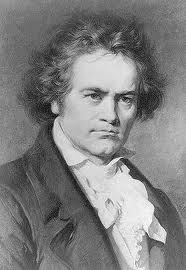 Ludwig Van Beethoven was without a doubt one of the greatest composers to ever live. He was also a drunken asshole.
Ludwig Van Beethoven was without a doubt one of the greatest composers to ever live. He was also a drunken asshole.
Sure he’s a classical music legend, a pioneer whose symphonies will echo through the ages, but for the people who knew him personally, Beethoven was notoriously antisocial, completely paranoid and consistently rude. None of which was helped by his frequent visits to the local tavern – at all hours of the day.
Between creating some of the most beautiful compositions this side of the Milky Way, the German composer was a life-long womanizer who was hated by all his servants and frantically moved 71 times. As he aged, his erratic behavior and mood swings became worse as he began to lose his hearing. He went completely deaf after composing his 9th Symphony in 1824, ending his career and leaving him nothing left to do but to booze it up.
He died a few years later from what many assume were liver complications. (I’m sensing a theme here)

8. President James Buchanan (1791-1868)
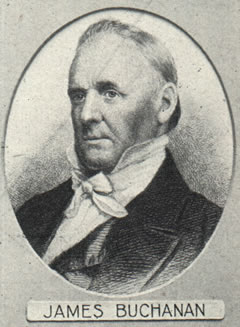
There are a dozen American Presidents who could make this list: Chester A. Arthur, Martin Van Buren and Franklin Pierce to name a few. (Hell, Andrew Johnson was sworn in drunk!) That said, James Buchanan could probably drink all those guys under the table – in a row.

Pierce’s slurred words after hearing that he was not nominated for reelection.
Buchanan didn’t do much with his presidency other than drink. In fact, he’s often blamed for the American Civil War that followed his stint as Prez, probably because he was too busy getting shit-faced. Buchanan reportedly got furious upon discovering that the White House was stocked with a limited supply of small champagne bottles. Every single night, he drank cognac and a couple other bottles of… something with a high alcohol content. Every Sunday, like clockwork, he would head to the local distillery and pick himself up a 10 GALLON jug of whiskey!
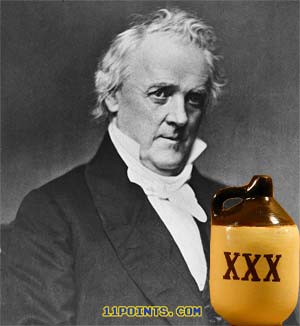
Buchanan: Now that’s a man with a drinking problem.
The crazy thing is, that he supposedly didn’t show any signs of intoxication in public. That said, the years of hard drinking definitely took a toll on his body: his immune system was so jacked up that he got gout not once, but twice!
(Read more about Presidential Fails here!)
7. Alexander the Great (356-323 BCE)
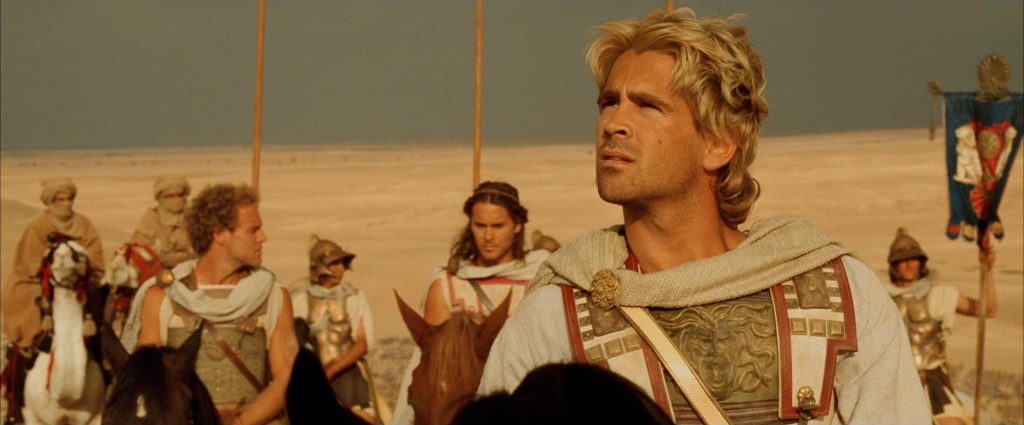
Yup, that one.
Alexander III of Macedon was many things: conqueror, visionary, male model. But there’s one thing ancient scholars tended to look over – he was a raging alcoholic! Just like his father, Philip, Alexander often had an over flowing whine goblet in hand. Some historians even argue that many of his most brave and cunning moves were actually the result of a stupidly drunk imbecile who just got insanely lucky.
One time at one of Alexander’s keggers, he had a drinking contest with his soldiers. When all was said and done, 42 people had died of alcohol poisoning…

Good times…
Alexander’s most tragic moment in life was when he killed his best friend, Cleitus, in a drunken rage. It’s also worth mentioning that Alexander the Great’s mysterious death may have been the result of alcohol poisoning or ingesting poisoned alcohol. Either way, his habit kicked him.
(Click here for more on Alexander the Great)
6. Emperor Wenxuan of Northern Qi (529-559)
Chinese Emperor, Gao Yang, began his reign as a benevolent ruler, with a focus on tax reform and an increased military. Unfortunately, that all changed a few years later when the Emperor went off the deep end. Yang started drinking excessively, indulging in multiple girlfriends and just being an all around dick to everyone in the kingdom. Not saying it was the alcohol, but… it was the alcohol.

This ‘Mad Emperor’ would get so freaking drunk in fact, that he didn’t even recognize the Empress, his own wife! One time, she scolded him for drinking too much, so he threatened to marry her off to a barbarian. This did not go over well as you can probably imagine (hell hath no fury and all that). She became so furious that he cowered in fear. Worried that he’d be exiled to the imperial dog house, Gao Yang got on his hands and knees in an attempt to appease her and make her smile. Instead, he drunkenly knocked her out of her chair.
 Upon sobering up the next morning, he realized what he’d done and attempted to throw himself into a fire, only to be saved at the last minute by his forgiving wife. He swore to never drink again… 10 days later he fell off the wagon into a giant vat of wine and became far worse than ever before.
Upon sobering up the next morning, he realized what he’d done and attempted to throw himself into a fire, only to be saved at the last minute by his forgiving wife. He swore to never drink again… 10 days later he fell off the wagon into a giant vat of wine and became far worse than ever before.
You see, Gao was a mean drunk with no consequences – which led him to killing multiple people in his court in his increasingly frequent drunken rages. It became so bad at one point that his Prime Minister, Yan Yin, started gathering prisoners for cannon fodder. It might also be worth mentioning that the women of his clan were ordered to sleep with him. When one concubine refused, he killed her.
It didn’t stop there though. This one time he asked a woman in the street what she thought of the Emperor. She was honest and told him that “He is so crazy that he really cannot be considered a Son of Heaven.” The Emperor nodded and then had her beheaded. Another time he had an affair with Consort Xue’s sister, whom he then murdered during an argument. He brandished her severed head before his officials at brunch the next day.
As fate would have it, the Mad Emperor soon died of liver poisoning from his years of consistent binge-drinking. Not a single person shed a tear at his funeral. Another cautionary tale for the history books.
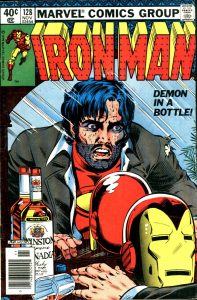
5. Ulysses S. Grant (1822-1885)
Really this whole list could be American Presidents. That said, I would be remiss to exclude the legendary drinking habits of Ulysses S. Grant. Seriously, Buchanan and the rest are all light weights compared to this scruffy, booze-breathing lumber-sexual.
Throughout the American Civil War, General Ulysses S. Grant drank constantly. (Really though, considering it was the bloodiest war in American history, could you blame him?) Even during a time when most people consumed more alcohol than water, Grant gained a reputation for drinking excessively.

After the Mexican-American War, Ulysses joined a proto AA group called the Sons of Temperance, because even he recognized that he had a problem. Not that it did much good, because at his next Army post, Grant immediately resumed his usual routine of getting black-out drunk in public.
This particular habit did become problematic with his superiors, especially when he tried to sue a shop keeper for his drunken ass tripping over himself on an icey sidewalk and another incident involving a brawl over a cheap bottle of wine. After one particularly epic night of getting completely wasted, he woke up in the barracks the next morning, half dressed, still heavily intoxicated and smelled like he’d gone swimming in a distillery – which led to him getting booted out of military service.

General Grant – probably reaching for a flask…
But then the Civil War happened and the Union was kinda desperate. Even so, they were skeptical of letting Grant back into their ranks. After he begged to fight for his country, they relented and threw him in with the other losers of the 21st Illinois Infantry Regiment. Colonel Grant, against all odds and expectations, actually managed to whip the unit into shape, leading to his promotion as Brigadier General.
As he rose through the ranks, so did his less-than-stellar drinking reputation, but this time, the Army couldn’t really argue with the results. According to historian James McPherson, “In the end his predisposition to alcoholism may have made him a better general. His struggle for self-discipline enabled him to understand and discipline others.”
Despite his extreme alcoholic intake, Grant earned his place in history as a war hero in his victory against Robert E. Lee and the Confederates. Abraham Lincoln even said, “I wish some of you would tell me the brand of whiskey that Grant drinks. I would like to send a barrel of it to my other generals.”
Ulysses S. Grant later went on to become President himself, but isn’t exactly regarded as a memorable Commander-in-Chief (more on that in a future segment). He spent most of his later years on the verge of bankruptcy and chugging brewskis with his bro Mark Twain.
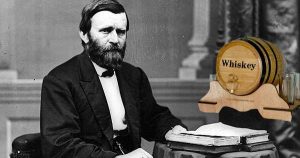
4. Sir Winston Churchill (1874-1965)
If you’re a WWII buff, than there’s no doubt you’ve heard of Winston Churchill – and his love affair with brandy. The British Prime Minister took on Hitler, won a Noble Peace prize and is considered one of the greatest leaders of the 20th century. He was also a larger-than-life, over-the-top drunk at all hours of the day.
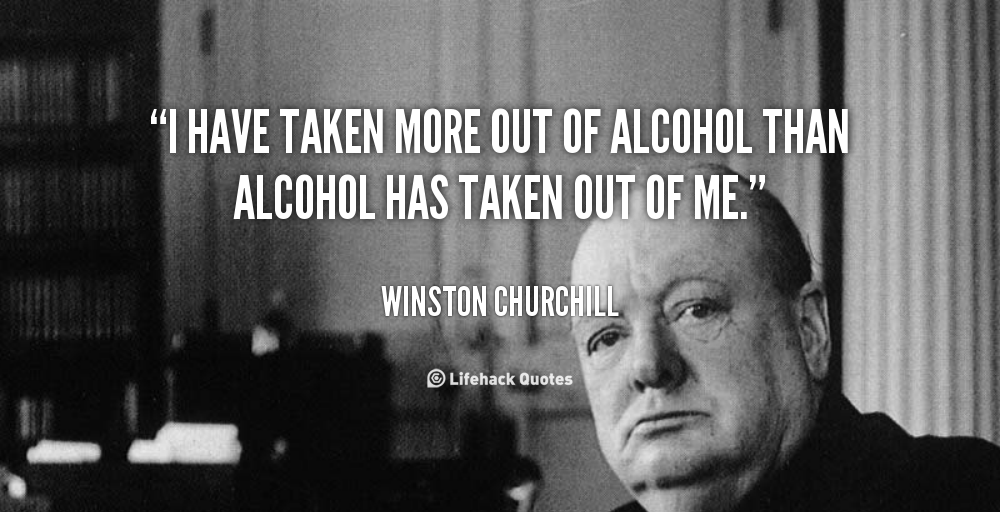
Regardless of his impressive achievements, Churchill was far from perfect. He started each and every day with cocktail of water and Johnny Walker – a habit he picked up while serving in India, where the water was unsafe to drink, and that was just the beginning of the day. In 1899, he was a correspondent on the front lines of the Second Boer War in South Africa, where it’s said he packed 36 bottles of wine, 18 bottles of scotch and 6 bottles of brandy.
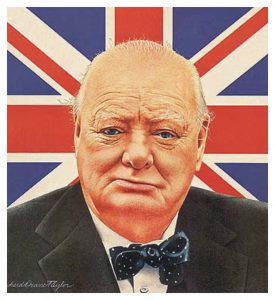 During WWI, as the British First Lord of Admiralty, he oversaw the disastrous Dardanelles Campaign against the Ottomans in 1916 – a failure that would weigh heavy on his heart for the remainder of his years. It prepared him for the incredible losses to come and many more years of heavy drinking.
During WWI, as the British First Lord of Admiralty, he oversaw the disastrous Dardanelles Campaign against the Ottomans in 1916 – a failure that would weigh heavy on his heart for the remainder of his years. It prepared him for the incredible losses to come and many more years of heavy drinking.
At a royal banquet in Saudi Arabia, King Ibn Saud asked Churchill why he wouldn’t eat. His reason: there was no alcohol served. The Saudi King was confused. Churchill explained that his rule in life was to drink before, during and after each meal. William Manchester described Churchill’s habit: “it reaches its peak late in the evening after he has had two or three scotches, several glasses of champagne, at least two brandies and a highball.”
In 1942, Stalin invited Churchill to Moscow, where the two discussed what to do with those Nazi douche-bags. Apparently Churchill out drank the Soviet dictator and earned his respect, leading to an alliance against the Axis Powers. Through his pump-up speeches on the radio, Winston Churchill kept the people of the UK hopeful during the German bombing raids, working with FDR to get the supplies they needed to fight back and was instrumental in leading the Allied forces to victory in World War II.
Churchill may have had more red wine than blood in his veins, but he still lived to be 90 years old!

Peace out dudes!
3. Ernest Hemingway (1899-1961)
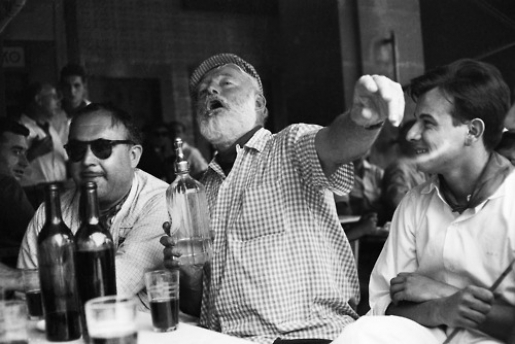
Nobel-Prize winning author, WWI veteran and hardcore liqueur enthusiast. Throughout his adventurous life, Ernest Hemingway published 15 books, was married 4 times and survived 2 plane crashes, but it’s his drinking habits that are the stuff of legend. There is a long history of writers and substance abuse: Edgar Alan Poe, Lord Byron, Mark Twain, Ian Fleming, Roald Dahl, Hunter S. Thompson, etc, BUT none of them hold a candle to Hemingway.
 Hemingway, an American journalist, wasn’t much of a drinker in his early years, but that all changed after the war in Europe. (Can’t say I blame him either, considering World War One was easily one of the darkest chapters in all of human history.) When he was hospitalized in Italy, he charmed the nurses into bringing him beer. From there he made his way through the entire selection of fine Italian wines… and women. Count Emanuele Greppi took Ernest under his wing and showed him some of the ‘finer things’ in life. Which in this case meant brothels and bars, lots and lots of bars.
Hemingway, an American journalist, wasn’t much of a drinker in his early years, but that all changed after the war in Europe. (Can’t say I blame him either, considering World War One was easily one of the darkest chapters in all of human history.) When he was hospitalized in Italy, he charmed the nurses into bringing him beer. From there he made his way through the entire selection of fine Italian wines… and women. Count Emanuele Greppi took Ernest under his wing and showed him some of the ‘finer things’ in life. Which in this case meant brothels and bars, lots and lots of bars.
Hemingway once wrote, “Don’t bother with churches, government buildings or city squares. If you want to know about a culture, spend a night in its bars.” It didn’t stop there either, after returning to the states, he kept on drinking like there was no tomorrow. When prohibition happened, he just moved up to Canada and later made his way back across the Atlantic to Paris, France. Spending most of his days writing and drinking and most of his nights drinking in taverns. He even drank with famous fascist dictator, Benito Mussolini!
Prior to the Cuban Revolution, Hemingway spent much of his later years in Cuba, dealing with high blood pressure, severe depression and liver disease – none of which was particularly helped by his excessive drinking habits. Unfortunately, despite all his accomplishments, his demons got the better of him, leading to his suicide in 1961.

2. Boris Yeltsin (1931-2007)
Oh Boris, you drunkard you.

Russian President Boris Yeltsin was instrumental in the dismantlement of the Soviet Union. Despite that historical footnote, he’s better known in most circles as one of the drunkest politicians in recent history. This former Communist really knew how to party.

It’s hard to find a photo of this guy not drinking!
Yeltsin was the first democratically elected Russian leader in over a thousand years. He embraced capitalism and spearheaded numerous reforms, but his tenure was also marred by economic depression, a significant spike in crime following the collapse of the USSR and a series of international incidents that were the direct result of him getting absolutely shit faced.
In 1992, during a negotiation with Kyrgyzstan, the pregaming Russian President decided it was a good time to practice playing the drums with a pair of spoons… on the Kyrgyz President’s head…
Then in 1994, he tagged along as part of a Russian delegation in Berlin to oversee the dismantlement of Russian forces in East Germany. At which point the entire world witnessed the drunken antics of Boris Yeltsin on live television – footage of: Boris dancing like a crazy person, stumbling into a parade and mumbling an incomprehensible speech.

After knocking back several drinks in 1997, Boris once again made his country proud at a conference in Stockholm, by publicly ranting about how Swedish meatballs somehow look like pro tennis player, Bjorn Borg, right before nearly falling off the stage. He then started going off on an unscripted tangent about banning the worlds nuclear weapons, at which point Russian officials grabbed the mic from him.
But nothing compares to his trip to Washington DC. One late night in 1995, while he was visiting with President Bill Clinton, Yeltsin snuck past his bodyguards after a long day of binge drinking. Secret Service agents later discovered Boris, half naked on the White House lawn, attempting to hail down a cab for a 3AM pizza run.

You’re welcome America.
1. Peter the Great (1682-1725)
What is it with these Russian rulers?
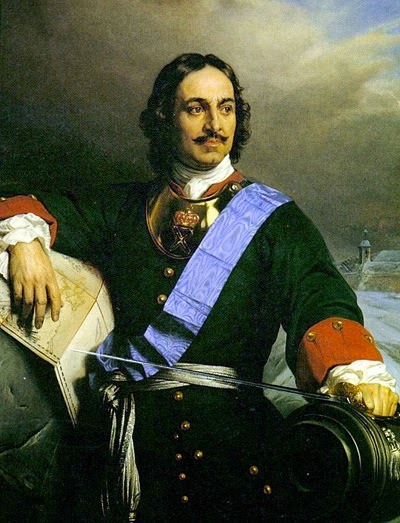
Peter the Great (Pyotr Alekseyevich), or as he called himself: Emperor of All Russia and Great Father of the Fatherland, is often considered one of Russia’s most beloved monarchs (unlike Ivan the Terrible). He was responsible for numerous reforms and helped bring Russia into the modern world… well the modern world of the early 18th century that is. As Czar, Peter reformed the military, improved science education, founded Saint Petersburg, made trade with Western Europe and out drank everyone in Russian history.
Peter (the Great) was one of the first and only Russian monarchs to travel across Europe on a diplomatic mission to strengthen Russia’s allegiance with its allies. This Grand Embassy was led by Peter himself in disguise, a disguise as Peter Mikhailov – an alias that fooled no one, especially considering he was slightly shorter than Shaquille O’Neal – at an insane 6 foot 8 inches – during a time when most people were 5’4″.
Throughout his European tour, Peter was a freaking rock star – throwing some of the wildest parties the world had ever seen. The vodka chugging czar even brought with him an entourage of drunken nobles and groupies known as “The All Joking, All Drunken Synod of Fools and Jesters” – an elite club dedicated to getting hammered until the early hours of the morning.

In 1698, Peter was invited to England where he studied the British Navy’s advances in ship building. During this time, Peter and his gang stayed at Sayes Court, an Elizabethan mansion. The properties owner, John Evelyn was horrified to discover the estate completely trashed! The beautifully furnished manor and historic gardens were reduced to rubble: trampled hedges, windows shattered, carpet ruined, paintings used as target practice, and a smoldering pile of 50 wooden chairs used in a bonfire.

Despite his near constant inebriation, Peter was an effective ruler, if not a bit eccentric. Among many of the changes he brought to his people, perhaps the most bizarre decision of his entire reign was instituting a beard tax…
And he lived happily ever after…? Haha – No.
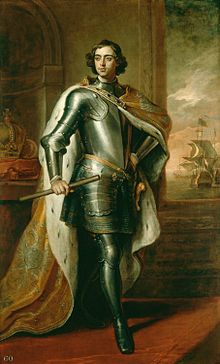 It wasn’t all fun and games for this Russian party animal. Between 2 unhappy marriages, Peter tragically lost most of his 11 kids. Some of his people considered him tyrannical and his violent temper was only made worse by his extremely excessive drinking. And then there’s his destructive relationship with his estranged son, Alexei Petrovich Romanov.
It wasn’t all fun and games for this Russian party animal. Between 2 unhappy marriages, Peter tragically lost most of his 11 kids. Some of his people considered him tyrannical and his violent temper was only made worse by his extremely excessive drinking. And then there’s his destructive relationship with his estranged son, Alexei Petrovich Romanov.
Alexei was kind of a hippie, so he and his father never really saw eye to eye. The two had a worse relationship than Luke Skywalker and Darth Vader. Alexei resented his father for the way he treated his mother and refused to take his place as Czar. He went into self exile to pursue his own interests. Peter became paranoid that his son was raising a rebellion against him (which he wasn’t). When Alexei returned home, Peter had him locked up, interrogated, convicted of high treason and tortured to death.
A few years later Peter “the Great” succumbed to a brutally nasty infection from gangrene in his bladder. On his deathbed Peter asked for a pen and paper. He wrote out, “Leave all to…” and then he died.
So there you have it, 10 of the drunkest dudes of history. Do you agree with this list? Let me know in the comments below! (Oh and please drink responsibly.)
ERIK SLADER
Want to help support “Epik Fails of History”? Click below to give a dollar a month! Your valued support will enable me to continue writing, maintain the website, do more research and so much more…
Alexander (the Great) – Part One
Presidential Pros and Cons – Part Two
Sources:
lordsofthedrinks.com/drunks-that-made-world-history
http://www.biography.com/people/peter-the-great-9542228#!
https://www.britannica.com/biography/Ogodei
http://www.biography.com/people/ulysses-s-grant-9318285
http://www.52composers.com/beethoven.html
http://www.history.com/topics/british-history/winston-churchill
http://www.independent.co.uk/news/uk/was-alexander-a-great-alcoholic-1537664.html
http://www.obsev.com/food/6-historical-figures-were-probably-drunk-most-time.html
http://www.biography.com/people/ernest-hemingway-9334498
http://www.cracked.com/quick-fixes/4-international-incidents-caused-by-drunk-boris-yeltsin/
http://www.history.com/topics/us-presidents/james-buchanan
http://www.dailymail.co.uk/news/article-1215101/Drunk-Boris-Yeltsin-outside-White-House-underpants-trying-hail-cab-wanted-pizza.html
http://www.edline.net/pages/SJBCathedralSchool/Classes/1213_05346001/Assignments/Crazy_Emperors_of_China
Alexander (the Great) – Part II
Alexander III of Macedon 356-323 BCE
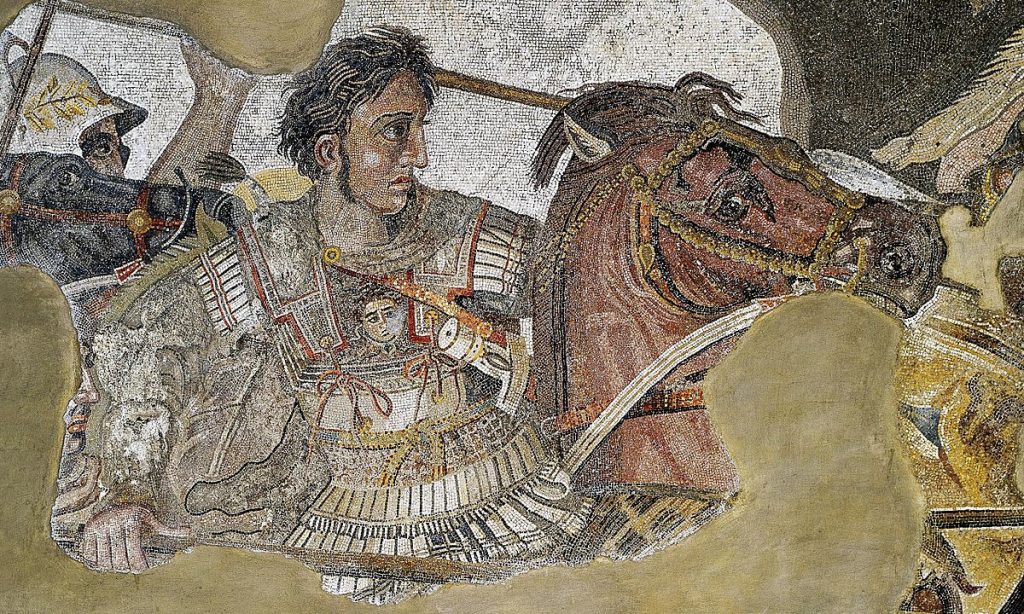
Continued from Part One: the origin of Alexander the Great
Alexander vs the World
In 333 BCE, Alexander first earned his reputation. It was at the Battle of Issus where Alexander truly proved himself. Much like the President from ‘Independence Day’, Alexander fought alongside his men against unfathomable odds and came out on top. After his initial incursions into Persian territory, Darius III decided to deal with this Alexander punk personally. Much to his surprise, Alexander turned out to be more than a minor nuisance.
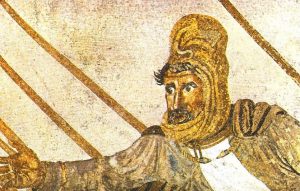
“Oh shit!”
Against all odds, Alexander’s rag tag band of 40,000 Greek Hoplites took on an army of 100,000 Persians on their own turf and beat them into submission. It was as though Alexander had unlocked ‘God Mode’ IRL. Alexander (the Great) threw out the rule book and charged headfirst at the enemy line, like a hyped-up raccoon with Rabies.
Darius was absolutely shocked at the ferocious brutality that Alexander unleashed on his men. During the chaos, Alexander’s men managed to capture Darius’s mom, wife and two daughters, while Darius himself was forced to retreat to Babylon in desperation where he surrounded himself with a few thousand reinforcements. Alexander didn’t care, nothing would stop him now. Like a T-800 on a mission, Alexander could not be bargained or reasoned with. Drenched in the blood of their comrades and exhausted from their long journey, the only thing that kept the Macedonians going was Alexander’s sheer will.
 Alexander’s goal was clear: to conquer the entire Persian Empire! He declared himself the “King of All Asia” – which is pretty baller, but also kinda funny when you consider that he didn’t even know that China existed. Following the crushing victory at Issus, Alexander the G followed it up with the Siege of Tyre before taking on (Persian-controlled) Egypt!
Alexander’s goal was clear: to conquer the entire Persian Empire! He declared himself the “King of All Asia” – which is pretty baller, but also kinda funny when you consider that he didn’t even know that China existed. Following the crushing victory at Issus, Alexander the G followed it up with the Siege of Tyre before taking on (Persian-controlled) Egypt!
After conquering the fortified city of Gaza with ease, the Egyptians welcomed Alexander with open arms, glad to be rid of the Persians. The Egyptians crowned Alexander the new Pharoah of both Upper and Lower Egypt and even claimed he was the reincarnation of both Osiris and Ra! It was there that Alexander began plans to build the city of Alexandria – the first of many. (Seriously, the guy built a lot of cities that he named after himself, think Trump, but with sword and sandals)
After hanging out in Egypt for a while, he finally decided it was time for a rematch with Darius, so rallied his troops and marched through Syria toward the heart of the Persian Empire…
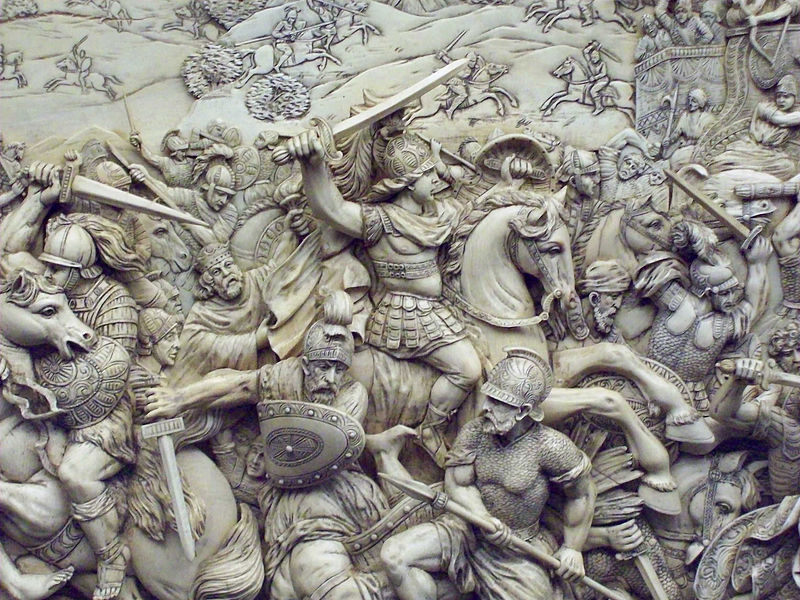
“LEEEEERRROOOOOYYY JENNNKIIINNNSSS!!”
Alexander v Darius: Round 2
The year was 331 BCE. The armies of Alexander and Darius stared one another down across the plain. The two faced off at the Battle of Gaugamela. Alex’s army was split into three factions in an attempt to envelope his enemy from multiple angles, but Darius was ready for him with one of the largest armies the world had ever seen.
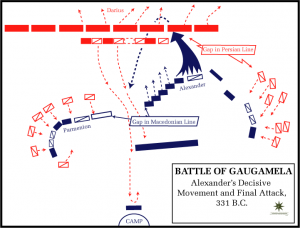
Darius had all of his men spread out in a long line with him at the center. Alexander had infantry on the left and led his cavalry on the right, while the rest of his army hung back. After defeating waves of Persian chariots, Alexander led a wedge formation straight for Darius himself in one of history’s craziest, most balls out charges! During the frantic fighting, Darius’s chariot driver was impaled by a javelin, which led to Darius’s army thinking their leader had been slain! The Persian line devolved into pure chaos as Darius fled the battle, barely surviving the onslaught as Alexander’s forces made quick work of what was left of Darius’s army.
Alexander vowed to chase Darius to the ends of the Earth. Darius planned to raise another army and strike back. Fate had something else in store entirely. Darius demanded loyalty, but his men ultimately betrayed him. After hunting Darius for months, Alexander found his body in a creek. Darius was dying – stabbed by one of his closest allies, chained to a cart and bleeding out all over his fancy robes. Alexander, pissed at Darius’s commanders for stealing his glory from him, swore to avenge his fallen enemy… that he had previously swore to kill.
In 330 BCE, Alexander the Great and his army marched into Babylon, the capitol of the Persian Empire, unopposed! It was there that Alex and his bros found more wealth than they ever thought possible! Alexander claimed that Darius had named him as his successor with his dying breath. As the new ruler of the Persian empire, Alexander gained an untold fortune of loot and became the wealthiest and most powerful man of the ancient world, over night!

After paying his troops, Alexander sent a massive sum of money back home – six times the annual income of Athens! Meanwhile, Alex and his men were living large in Babylon. In fact, the burning of the Persian city of Persepolis may have actually been the result of a party that got waaay out of hand. Alexander embraced decadence and just generally stopped giving a shit all together.

The Dude abides.
During this time, Alexander’s new “King of Kings” title started to go to his head. After a couple years, flaunting around in Persian robes and adopting their customs, Alexander’s Greek troops started to whisper behind his back, worried that he was no longer the hero they’d worshiped, he’d gone native.
But things turned tragic at a particularly drunken banquet in 328 BCE…
Alexander kills his BFF
Alexander and his best friend, Cleitus the Black, got into an argument that turned violent. Alex told Cleitus he was going to send him in charge of a contingent of former Greek mercenaries to take care of some nomads in Central Asia. Cleitus (the man who saved Alexander’s life at the Battle of Granicus), was insulted at the thought of being sent to the middle of nowhere in charge of second-rate soldiers. Cleitus got all riled up and gave Alexander a piece of his mind.
Alexander ignored him and went on and on about how much better he was than his father. Cleitus shot back – saying he was half the man his dad was and that all his achievements were thanks to him. Alexander yelled for his guards in anger, but they decided to sit this one out. Alexander threw an apple at Cleitus’s head and then grabbed for his dagger. Alexander’s buddies confiscated the dagger and held him back. The party goers managed to separate the two angry drunks. Alex drunkenly attempted to sound the call to arms. Right as he managed to get his hands on a javelin, Cleitus popped his head back into the room with another come back ready, but before he could utter “And another thing!” – Alexander speared him through the chest.

After drunk stabbing his bestie, Alexander went into a deep depression and began to drink even more. All the while, Alexander’s army continued to party hard in Babylon until 327 BCE, when he finally pulled himself out of his drunken stupor and decided it was time to start conquering again…
Alexander goes to India
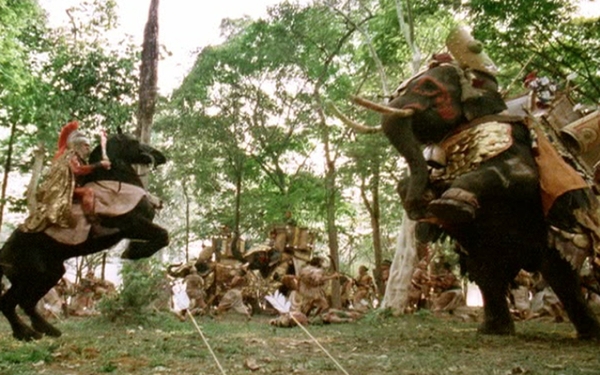 Alexander the Great marched his forces East towards the unknown, in an attempt to spread his rule to the furthest reaches of the world: India. This time however, he bit off a little bit more than he could chew. Alexander and his men faced off against war elephants, fierce warriors and a harsh tropical climate, far from home, in a strange new land they had no bearing on. During his campaign through India, Alexander got himself wounded on a couple of occasions: taking a dart to the shoulder and later an arrow to the ankle. During the Battle of Hydaspes, Alexander was nearly defeated and even lost his loyal horse.
Alexander the Great marched his forces East towards the unknown, in an attempt to spread his rule to the furthest reaches of the world: India. This time however, he bit off a little bit more than he could chew. Alexander and his men faced off against war elephants, fierce warriors and a harsh tropical climate, far from home, in a strange new land they had no bearing on. During his campaign through India, Alexander got himself wounded on a couple of occasions: taking a dart to the shoulder and later an arrow to the ankle. During the Battle of Hydaspes, Alexander was nearly defeated and even lost his loyal horse.
After the battle, Alexander appointed the defeated Indian general, Porus, as governor of the region and then named a city after his fallen horse. When Alexander arrived at the edge of the Ganges River, ready to take on the powerful combined might of the Gangaridai Empire of Bengal and the Nanda Empire of Magadha, his men finally threw in the towel. Alexander’s army refused to cross the river and follow him any further. They were tired, some of them hadn’t seen their families in years, and they faced certain doom if they followed Alexander any further on his suicidal quest for grandeur.
Alexander’s general, Coenus, persuaded Alexander to change his mind and turn back, reinforcing that his men “longed to again see their parents, their wives and children, their homeland”. On the long 60-day march back through the Gedrosia Desert, Alexander lost three-quarters of his army to heat and exhaustion.
Alexander the Great Failure?
Alexander (the Great) was far ahead of his time championing progressive ideals like freedom, and education.
He also was responsible for the deaths of hundreds of thousands of innocent people in a vain conquest for glory…
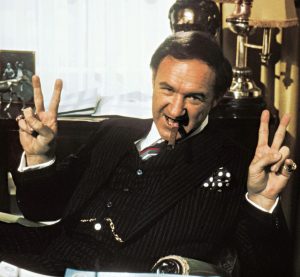
Lex Luthor approves.
Then, on June 11th, 323 BCE, Alexander the Great died unexpectedly, at the height of his power at just 32 years old. Unfortunately, he didn’t leave a proper successor to the throne…
Which meant that the those closest to him spent the rest of their lives fighting over the Kingdoms of Alexandria like hungry, hungry hippos fighting over the last chicken leg at the bottom of a bucket of KFC. Ultimately, Alexander himself was responsible for the eventual (inevitable) collapse of the vast empire he spent his entire life building. There’s a lot of speculation surrounding the death of Alexander the Great, some think he was poisoned, but more likely he poisoned himself with weeks upon weeks of binge-drinking.

Despite all his glorious conquests, it could be argued that Alexander was a colossal failure, ultimately leaving behind the world a more chaotic place than the one he was born into. Much of his legend can be attributed to egotistical self-promotion. Alexander had a vision of the future, but it never came to fruition. Although his Macedonian Empire may have had an early expiration date, from its ashes a new world power emerged that would forever shape the course of the future: Rome.
ERIK SLADER
—– More articles on Historic Failure:
A SPARTAN’S TALE, XERXES FAILS
—Sources:
“Alexander the Great Failure” by John D. Grainger
“The Death of Alexander the Great” by Paul Doherty
“The Book of Ancient Bastards” by Brian Thornton
“Outnumbered” by Cormac O’Brien
Dan Carlin’s “Hardcore History” (podcast)
Alexander the Great – Creating the Legend (Bio Documentary)
All Time Greatest Commanders: Alexander the Great (History Channel Documentary)
Battles BC: Alexander – Lord of War (documentary)
“Alexander” (2004) – Directed by: Oliver Stone, starring: Colin Farrell
http://www.history.com/topics/ancient-history/alexander-the-great
http://www.historyofmacedonia.org/AncientMacedonia/AlexandertheGreat.html
http://www.biography.com/people/alexander-the-great-9180468
http://www.ancientbattles.com/Issus/Issus.htm
http://burnpit.legion.org/2012/10/battle-gaugamela-alexander-great-defeats-king-darius-persia
SPARTACUS
The Third Servile War 73-71 BCE
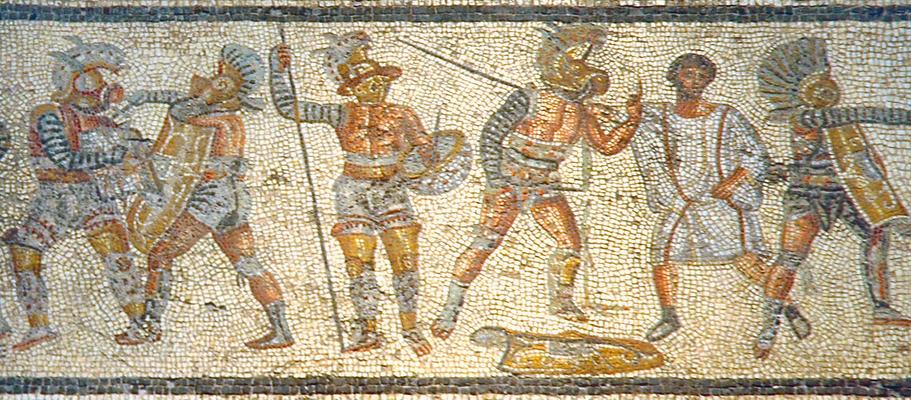
“When a free man dies, he loses the pleasure of life. A slave loses his pain. Death is the only freedom a slave knows. That’s why he’s not afraid of it. That’s why we’ll win.”
– Spartacus (Kirk Douglas, 1960)
Spartacus is the legendary story of a gladiator who rebelled against his masters, who led a slave uprising against the might of the Roman military and died fighting for his freedom. It’s an inspiring allegory of hope and bravery in the face of certain doom.
It’s also true.
During the later years of the Roman Republic, gladiator games had become all the rage. To the Roman citizens of the time, these were the equivalent of modern sports events: crazed fans would flock to arenas where they would cheer on their favorite competitors. The main difference of course was that these athletes didn’t always make it out alive. All for the amusement of the masses.
(Think football with decapitations.)

No, not those guys…
The Roman gladiators were slaves who trained, fought, and died to appease the crowds. They were often armed with lethal weapons and pitted against one another in an arena. Gladiators were occasionally ‘recruited’ criminals or prisoners from conquered armies and trained under a ludus, which was basically gladiator school: less of a gym and more of a Mortal Kombat style prison camp.
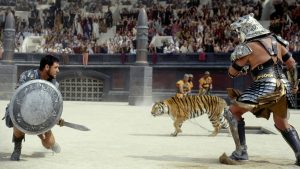
Most of the students never, um… ‘graduated’.
The man who came to became known as ‘Spartacus’ was a Thracian soldier, who became a prisoner of war. He was sold to Lentulus Batiatus and brought in chains to the Roman city of Capua, where he was forced to swear allegiance to the ludus and took an oath to be burned, chained, beaten and killed by an iron weapon. Think Mad Max: Beyond Thunderdome.
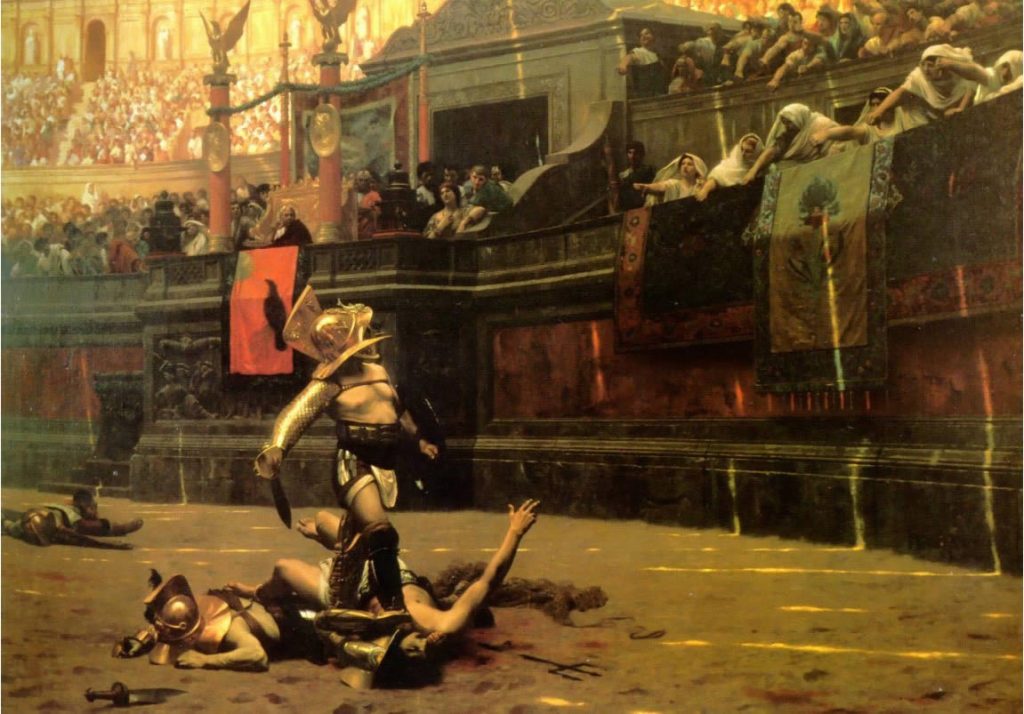
“Two men enter, one man leaves.”
In the ludus, the gladiators trained with swords, shields, nets, tridents, and clubs. Among these fellow gladiators were two Gallic slaves called Crixus and Oenomaus. It’s also worth noting that many of these gladiators were celebrities, some even endorsed products and most of them probably used stage names, like WWE’s Macho Man Randy Savage.

The name ‘Spartacus’ was probably a reference to the Greek Spartans who held their ground against the might of the Persian Empire during the Battle of Thermopylae. Spartacus quickly became a heavyweight champion and slowly began to gather supporters, both in the arena and outside of it. Between death matches, Spartacus and his allies began to plan their escape.
 When the opportunity finally came to make a break for it, someone betrayed them (because of course they did). Spartacus and about 70 other gladiators decided to drop their elaborate escape plan and improvise. They stormed the kitchen and grabbed anything sharp enough to stab their way out with and began a long montage of Tarantino-esque executions.
When the opportunity finally came to make a break for it, someone betrayed them (because of course they did). Spartacus and about 70 other gladiators decided to drop their elaborate escape plan and improvise. They stormed the kitchen and grabbed anything sharp enough to stab their way out with and began a long montage of Tarantino-esque executions.
After fighting their way to freedom, the slave rebellion raided several wagons full of gladiator weapons and armor. Instead of making a run for it to retire in some faraway land, Spartacus, Crixus and Oenomaus banded together and started a movement. What started as a small revolt, soon turned into a full slave uprising. Spartacus and his men plundered supply lines along the Roman roads, freed and recruited slaves and eventually organized into an army of thousands!
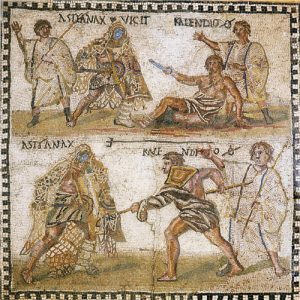 The Roman legions had been busy off fighting in Spain when Spartacus’s rebellion began to gain momentum. Rumors began to circulate that Spartacus was planning an assault on Rome itself, which made the nobility nervous. In response, the Roman senate sent in praetor Gaius Claudius Glaber and a Roman militia to stop the rebellion in its tracks.
The Roman legions had been busy off fighting in Spain when Spartacus’s rebellion began to gain momentum. Rumors began to circulate that Spartacus was planning an assault on Rome itself, which made the nobility nervous. In response, the Roman senate sent in praetor Gaius Claudius Glaber and a Roman militia to stop the rebellion in its tracks.
Spartacus set up camp on Mount Vesuvius (the volcano that would later destroy Pompeii) where they were besieged by Glaber’s force of 3,000 soldiers. Glaber intended to block off the route and starve them out, but had underestimated the ingenuity of his enemy. Spartacus’s men used vines to repel down the mountainside, behind Glaber’s army where they made short work of them. I just wish I could see Glaber’s face when he saw these ‘uncivilized barbarians’ repelling down the mountainside like Seal Team Six operatives in a Tom Clancy novel.
The rebels continued to face down impossible odds and repeatedly came out on top. It seemed as though Spartacus was unstoppable. So did they ultimately lead the rebels to victory, end slavery, and live happily ever after?

After hearing that Spartacus had taken down two whole legions, the Roman senate began to sweat. They chose Marcus Licinius Crassus to bring down Spartacus once and for all. He was given 8 legions – a total of 40,000 Roman soldiers! Meanwhile, another up and coming Roman politician, Pompey (the Great), was heading back from Spain. Crassus was determined to bring Spartacus down before his rival got the chance to show him up.
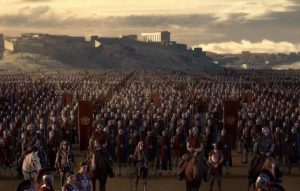 During this time, Spartacus attempted to gain passage to Sicily to gain reinforcements. They made a deal with some Cilician pirates, who immediately betrayed them. Spartacus’s men retreated, but were met by Crassus’s forces as they attempted to route them south and cut off their supplies.
During this time, Spartacus attempted to gain passage to Sicily to gain reinforcements. They made a deal with some Cilician pirates, who immediately betrayed them. Spartacus’s men retreated, but were met by Crassus’s forces as they attempted to route them south and cut off their supplies.
Upon getting intel that Roman reinforcements were en route, Spartacus decided to go before Crassus in an attempt to bargain. It didn’t go well.
Spartacus returned to his men with the bad news. During a pump-up speech to his troops, he had his horse brought out to him. He drew his sword and slew his own horse. Spartacus proclaimed that if they won this day, he would have hundreds of horses to choose from, but if they should fail, he wouldn’t need one.
Turns out, he didn’t need the horse after all…
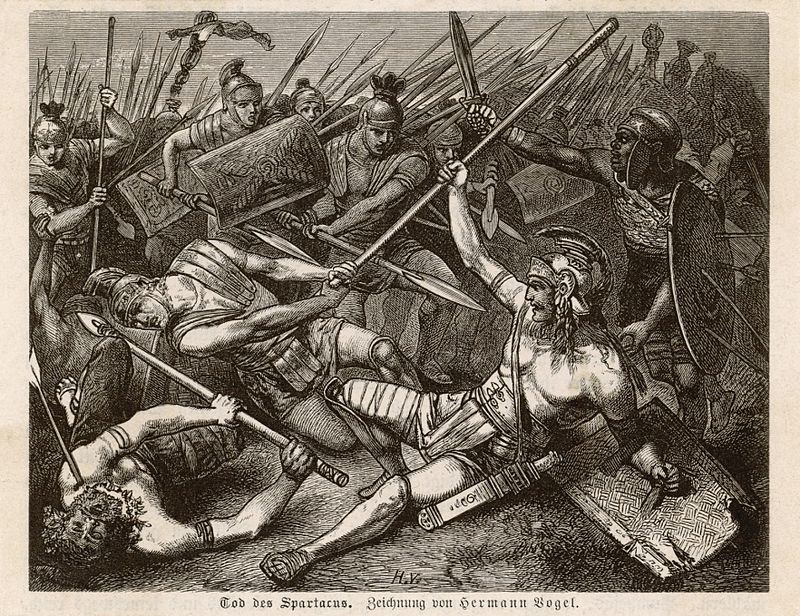
Spartacus fell at the Battle of the Silarius River, along with 36,000 rebels. Crassus captured and crucified 6,000 former slaves as a warning to others. Pompey came in with the clean up crew and crucified another 5,000 more who attempted to flee. (Romans really liked to crucify people.) Gladiator games continued in Rome for another 400 years.
Spartacus’s uprising may have ultimately failed, but the legend of his rebellion lives on and continues to inspire those fighting against the injustices of their own time, all these centuries later.
Erik Slader
Sources:
“The Spartacus War” by Barry Strauss
“Spartacus: Blood and Sand” (2010-2013)
https://en.wikipedia.org/wiki/Spartacus
http://www.vroma.org/~bmcmanus/spartacus.html
https://www.history.com/news/history-lists/10-things-you-may-not-know-about-roman-gladiators
THE FALL OF CONSTANTINOPLE
The Fall of Constantinople 1453
For over a thousand years, Constantinople stood as the center of the known world, a crossroads between ‘East’ and ‘West’. This ancient city was a prized jewel for all manner of conquerors. This great city was an indestructible fortress with +100 defense. Like an underdog turned undefeated champion on a winning streak, Constantinople miraculously withstood wave after wave of attack, with a few exceptions: the Huns, the Mongols, the Persians, the Seljuks, you name it… well, that is until the year 1453 rolled around and the entire kingdom fell like a house of cards thanks to one dumb ass who left the gate open, but I’m getting ahead of myself.

BYZANTIUM
Way (way) back in 657 BCE, Byzantium was founded by the Ancient Greeks. Several hundred years later it was conquered by the Roman Empire (you know those pompous toga-wearing guys with an affinity for vomitoriums). Then one day, in 324 CE, Emperor Constantine was bored so decided to rename Byzantium after himself. Constantine established ‘Constantinople’ as the brand spankin’ new capitol of the now ‘Holy’ Roman Empire. This turned out to be a VERY bad move, seeing as Constantinople was on the outskirts of the Empire, whereas Rome was dead center, making it very hard to manage. This didn’t last long, because it was a stupid idea to begin with.
 The New and Improved Byzantine Empire expanded throughout the East under Emperors Theodosius and Justinian. During the 8th and 9th centuries, religious icons were banned by both Leo III and Constantine V, leading to the destruction of dozens of works of art ironically deemed sacrilege. This would ultimately become one of the main factors of division between the East and West Roman Empires, eventually leading to THE GREAT SCHISM of 1054 when Pope Leo IX excommunicated the Orthodox Church of Constantinople over petty differences in Christian belief and practice, like whether or not to use leavened or unleavened bread during mass.
The New and Improved Byzantine Empire expanded throughout the East under Emperors Theodosius and Justinian. During the 8th and 9th centuries, religious icons were banned by both Leo III and Constantine V, leading to the destruction of dozens of works of art ironically deemed sacrilege. This would ultimately become one of the main factors of division between the East and West Roman Empires, eventually leading to THE GREAT SCHISM of 1054 when Pope Leo IX excommunicated the Orthodox Church of Constantinople over petty differences in Christian belief and practice, like whether or not to use leavened or unleavened bread during mass.
In 1202, Pope Innocent III called for a Fourth Crusade to take Jerusalem ‘back’ from the Muslims and maybe conquer Egypt while they were at it (at the time there was a truce, but they just wanted the Holy Land all to themselves). Somewhere along the way the Crusaders were diverted to Constantinople, leading to one of the most ironic twists in history: Without warning, the Christian Crusaders attacked the Christian City of Constantinople.

And so the Christian crusaders on a mission to free Jerusalem, instead ransacked the greatest Christian city the world would ever see. The Crusaders attacked shouting “Holy Sepulcher!” which roughly translates to: “The Tomb in which Jesus Christ, our Lord and Savior was buried and then resurrected on the third day!!!” The defending Greeks of Constantinople responded with their own battle cry, “Jesus Christ conquers! Hoorah!!!” The defenders of Constantinople were completely caught off guard by this unexpected friendly fire and fell prey to three days of pillaging. Sacred relics were smashed, priceless art was destroyed and the city’s most precious treasures were looted by the greedy mercenaries. The Byzantines later reconquered their city from the Latin Empire in 1261, but now that they were surrounded by enemies, with their previous wealth depleted, Constantinople would never again be the same…
RISE OF THE OTTOMAN EMPIRE

No… not those ones…
Two factions of the Islamic faith, the Sunni and the Shi’a have been at war since the days after Muhammad when the Muslims became divided into warring tribes. In the midst of this never-ending conflict, during the 13th Century, Estugral, Khan of the Kayi Tribe (of the Sunni Oguz Turks), fled from the Mongol hordes of Persia and raised a Gazi force under the Sultan of Rum. His son, Osman I, founded the Osmanli dynasty which has since come to be known as the Ottoman Empire, a powerful nation that ruled for over 600 years. The Ottomans quickly took out the short-lived Serbian Empire and made the Balkans their bitch. Then the Ottoman Turks spread throughout the Middle East, absorbing other cultures as their own, but they lacked a central capitol in which to rule from. Enter: Mehmed II – the young Ottoman Sultan who set his sights on the once great city of Constantinople.
“Only one thing I want: give me Constantinople!” – Mehmed the Conqueror
Mehmed II v Constantine XI

Mehmed the Conqueror’s Dating Profile Pic
The Byzantine Emperor, Constantine XI (yes, the eleventh! – they weren’t very original in the baby naming department back then), attempted to placate the young Sultan to no avail. Mehmed began by cutting off Constantinople’s supply lines from Venice, claiming that Constantine had broken the truce between their people with little to no evidence, just a shitty excuse for war.
Before attacking, Mehmed issued Constantine an ultimatum, “I will as the law commands there, you the citizens of this greatest city, harm neither your families nor your belongings, if you voluntarily surrender the city to me.”
Constantine responded with, “To surrender the city to you is beyond my authority or anyone else’s who lives in it, for all of us, after taking the mutual decision, shall die out of free will without sparing our lives.”
Constantine ignored the threat, confident that this attempted siege would fail just like all those that came before them, but Mehmed brought something new to the table that changed everything: gunpowder!
The Ottomans forged sixty cannons and assembled 100,000 troops to take down the Capitol of the Byzantium Empire.
The Siege Begins!
On April 6th, 1453, the grand army of Turks rolled in and swarmed around the tightly defended perimeter of the city. The war drums were soon followed by a relentless succession of cannon balls blasting into the stone walls. As Turkish soldiers attempted to scale the walls they were met with both arrows to the face and boiling hot oil. They immediately focused all their firepower on one specific segment of the fortress in an attempt to burrow through.
“The explosion made all the walls of the city shake, and all the ground inside, and even the ships in the harbor felt the vibrations of it. Because of the great noise, many women fainted…” – Nicolo Barbaro
While both sides exchanged volleys of arrows, Mehmed’s navy went around the back. Although Constantine’s men had cleverly blocked off the entrance to the harbor, the Turkish ships went the long way: over land. Sicilian ships were sent in as reinforcements and attacked with their secret weapon: Greek Fire!

Pictured: A Medieval Flame Thrower
Greek Fire was a viscous flammable mixture, a mysterious substance that burns on water, originally developed by Athenian Alchemists, and later discovered by the Byzantines from the library of Alexandria. It proved to be rather effective against enemy ships. Meanwhile, the siege dragged on for FIFTY freakin’ DAYS!

The struggle is real…
Two months later…
Things were starting to look hopeless, for both sides.
Between a freak hailstorm and an eclipse, the defenders of Constantinople began to get superstitious of the ominous symbolism.
 The Turks weren’t having much luck bombarding the heavily fortified walls of the city, but as the days went on, the citizens of Constantinople began to run low on supplies. Mehmed (like Wily Coyote) was ever persistent and had several back up plans to boot. Seeing as their initial plot to tear down the walls wasn’t working, they decided to dig under them. When that didn’t work, they starting work on a massive wooden tower to go over the wall.
The Turks weren’t having much luck bombarding the heavily fortified walls of the city, but as the days went on, the citizens of Constantinople began to run low on supplies. Mehmed (like Wily Coyote) was ever persistent and had several back up plans to boot. Seeing as their initial plot to tear down the walls wasn’t working, they decided to dig under them. When that didn’t work, they starting work on a massive wooden tower to go over the wall.
The Ottomans constructed it overnight and began work on a make-shift bridge over the moat to wheel the siege tower in place. That night, some of the city’s defenders snuck out and lit a powder keg at the bottom of the tower. The rickety tower was engulfed in flame and collapsed faster than a lopsided game of Jenga, taking dozens of Turks with it.

Mehmed’s men were very close to giving up and calling it a day, but then on May 29, 1453 – someone made a very dumb mistake: a single unguarded gate was carelessly left open. As the Ottomans made one last attempt to scale the walls of the city, and the exhausted defenders beat them back for four hours straight, one of the Turks saw that the gate was slightly ajar. He presumably did a double take, before letting his buddies in on it. It didn’t take long for fifty Ottomans to flood through the entrance. The defenders of Constantinople were overwhelmed, many of them dropped their weapons and ran from their posts, screaming for their mothers, with a steady stream of urine trailing behind.
“The blood flowed in the city like rainwater in the gutters after a sudden storm, and the corpses of Turks and Christians were thrown in the Dardanelles, where they floated out to sea like melons along a canal.” – Barbaro
As the sun rose that morning, the Ottoman banner was raised in victory. 30,000 captured – 4,000 killed.
Once the walls had been breached, the game was over.

Like running out of quarters while going for the world record…
Constantinople becomes Istanbul
Constantine’s last recorded words were: “The city is fallen and I am still alive!” He then, presumably ripped off his imperial garments, grabbed a sword, and alongside his soldiers charged into the mass of incoming Turks.

Mehmed: 1 Constantine: 0
The Sultan rode into the conquered city on a white horse, dismounted in front of the Hagia Sophia Church, one of the most astonishing building’s ever constructed. Mehmed kneeled down and poured dirt over his turban as a sign of humility. When he entered the sacred sanctuary, he saw his men chipping away at the beautiful Christian iconography and immediately ordered them to stop. The Hagia Sophia was to be preserved and transformed into the Aya Sofya mosque.
The Pope didn’t even find out about the city’s defeat until a month later. When Pope Nicholas V called for a Tenth Crusade to take back Constantinople, the response was ‘meh’ at best. You see, England and France were still licking their wounds from beating each other half to death during The Hundred Years War, the German Emperor, Frederick III, was broke, Hungary was in disarray, and King Alfonso of Spain had enough of his own problems maintaining his own territory. The Ottomans saw this as a good opportunity to wipe out what remained of the Byzantine Empire, so they did.
Meanwhile the city prospered under Mehmed’s rule, as the new capital of the Ottoman Empire, Istanbul. Christians and Jews were allowed to keep their religions and were protected as long as they paid their taxes. The Jewish community in particular had far fewer restrictions under the Ottoman Empire than they did throughout Western Europe.
Interesting side note: under the Ottoman Empire, the city of Istanbul became renowned for having more than 1,400 public toilets!

The Hagia Sophia Mosque, today.
Mehmed the Conqueror then went on to challenge Dracula himself to a bout of fisticuffs.
The Ottoman Empire was later disintegrated during the First World War and gave way to the Republic of Turkey in 1922.
The main reason The Fall of Constantinople is so vital to our history and the development of our modern world is that it directly led to the Italian Renaissance! You see, following the conquest of the city, the Byzantine immigrants to Venice brought with them the scientific knowledge of Arabian scholars and mathematicians that sparked the end of the Dark Ages and a new unprecedented era of enlightenment. Furthermore, Istanbul closed off Western Europe from the East, forcing Europeans to expand into uncharted territories (see Columbus). Historians consider this the final chapter of the Late Middle Ages and the official end of the original Roman Empire, nearly a millennium after the collapse of Rome itself.
It would seem that nothing lasts forever…
ERIK SLADER
Hope you enjoyed this edition of “Epik Fails!”, if you have any comments, questions, concerns, or suggestions let me know in the comments below! Also, be sure to ’Like’ EPiK FAILs on Facebook, or Follow on Twitter, and SHARE IT with your friends!
 —– More articles on Historic Failure:
—– More articles on Historic Failure:
—Sources:
“The Fall of Constantinople” by Ruth Tenzer Feldman
“History’s Turning Points: The Siege of Constantinople” – History Channel
http://www.thenagain.info/webchron/easteurope/fallconstantin.html
http://www.shsu.edu/~his_ncp/Turkey2.html
CLEOPATRA – Last Pharaoh of Egypt…
Queen Cleopatra VII Philopator / Κλεοπάτρα 69 – 12 BCE
Cleopatra the Seventh, Queen of the Nile, Pharaoh of Egypt, and alleged reincarnation of the goddess Isis, was actually part Greek and the last ruler of the Macedonian dynasty. Cleopatra was considered a wise and just ruler by her people, but she was also notorious for using sex, power, and murder to achieve her goals. According to the Romans, Queen Cleopatra was a poisonous seductress whose lust for power had no limits. Oh yeah and she also slept around a lot with other famous historical dudes of the time.

Cleopatra wearing her best lead eyeliner…
Cleopatra VII Thea Philopator was descended from Ptolemy the First, one of the successors of Alexander the Great, who got to keep Egypt when Alexander died. Cleo’s father, King Ptolemy XII (the twelfth?!), was a crazy bastard. Ptolemy XII Auletes was a weak, self-indulgent drunkard. It’s also worth noting that he married his cousin and / or sister, and was the latest in a long line of incestuous rulers.
Evidence suggests that in 58 BCE, Cleopatra’s older sister, Cleopatra VI Tryphaena, had her husband strangled, then murdered her mother, Cleopatra V, and seized the throne while their father was out of town. Then one of their other sisters, Berenice IV Epiphaneia, ordered the assassination of her sister, Cleopatra (#6), in order to seize the throne for herself. Upon their father’s belated return from Rome, Berenice was beheaded.
This was the household that Cleopatra (#7) grew up in.
Perhaps it’s unsurprising considering her circumstances, that she was a diva with daddy issues who always got her way, and kind of like that chick from ‘Species’, turned into a somewhat slutty man-eating succubus with a penchant for brutal murder.
 After Ptolemy’s own (somewhat suspicious) death, the 18-year-old Cleopatra and her 10-year-old brother, Ptolemy XIII, inherited the throne together as co-rulers. They ruled Egypt from the port city of Alexandria for over a year, but she had no interest in being married to her bratty brother. (Who could blame her?) Ptolemy Jr. started to get jealous of all the attention his sis was getting, so his regent, Pothinus attempted to have her killed, as was apparently custom. Cleopatra managed to evade her would-be assassins, and fled into exile, where she raised her own army, sparking a full on civil war. As if this sibling rivalry weren’t complicated enough, her other other sister, Arsinoe IV, decided she wanted to be queen too.
After Ptolemy’s own (somewhat suspicious) death, the 18-year-old Cleopatra and her 10-year-old brother, Ptolemy XIII, inherited the throne together as co-rulers. They ruled Egypt from the port city of Alexandria for over a year, but she had no interest in being married to her bratty brother. (Who could blame her?) Ptolemy Jr. started to get jealous of all the attention his sis was getting, so his regent, Pothinus attempted to have her killed, as was apparently custom. Cleopatra managed to evade her would-be assassins, and fled into exile, where she raised her own army, sparking a full on civil war. As if this sibling rivalry weren’t complicated enough, her other other sister, Arsinoe IV, decided she wanted to be queen too.
Meanwhile in Rome (48 BCE), some dude called Julius Caesar and this other Roman guy named Pompey (the Great?) were at each other’s throats. Something about crossing a Rubicon? Anyway, long story short, Caesar got the upper hand and Pompey ran with his tail between his legs. Caesar’s legions pursued him to Egypt. When Pompey arrived on the Nile, he rowed out to meet with Ptolemy’s regent. Pompey’s wife, Cornelia, watched helplessly as her husband was greeted by several knives to the back. Maybe they thought that’s how Romans shook hands?

Turns out Pothinus had already calculated the potential advantage of siding with Caesar, and figured they’d be doing him a favor by taking out his nemesis for him. He also figured the Roman dictator could help end the civil war in Ptolemy’s favor. This plan backfired horribly. Upon arrival in Egypt, Caesar received the gift-wrapped severed head of his rival, Pompey, his son-in-law. According to Plutarch, JC was furious and took this as a cowardly insult to both he and the honor of his fallen frenemy.
Caesar stayed in Egypt, determined to end this family feud, and reestablish control over the region. One night, while he was attempting to figure out precisely how to go about that, Caesar received a delivery. The Egyptian servants bowed before Caesar with a carpet, gifted to him by Cleopatra. When the carpet was unraveled before Caesar, out rolled none other than Elizabeth Taylor Cleopatra, the drama queen herself.

It was lust at first sight.
You see, Caesar was a notorious lady’s man, so being the uh… resourceful woman she was, Cleopatra decided to use that to her advantage… She was 21, he was 52 – and married to his third wife. Regardless, Caesar was instantly captivated, but not just by her looks. Another possible factor was Caesar’s chronic debt and the fact that Cleopatra had more money than Oprah.
Nine months later, Cleopatra gave birth to Caesarion, which literally translates to ‘Little Caesar’.

Caesarion aka ‘Little Caesar’
Cleo’s siblings, Ptolemy XIII and Arsinoe IV, joined forces to take on their sister’s new arm candy, Caesar. Between the Siege of Alexandria and the Battle of the Nile, the library of Alexandria was partially torched, and thousands of Egyptians died in the cross-hairs, but the Roman Legionnaires were victorious. As Ptolemy’s army crumbled around him, he attempted to make a run for it, but he drowned when his golden armor caused him to sink into the river. Arsinoe was captured and Caesar reestablished Cleopatra as co-ruler with her other younger brother, Ptolemy XIV (because who needs original names?).
Cleopatra’s son with Julius, Ptolemy XV Caesarion, was never acknowledged as a legitimate heir, but ended up being Caesar’s only male child. In 46 BCE, JC’s suga momma, and their son (Lil’ Caesar), accompanied him back to Rome, where they met his wife, Calpurnia and stayed at his villa on the outskirts of the city. If that wasn’t enough, Caesar also commissioned a golden statue of Cleopatra in the temple of Venus.
Then Caesar had to go and get himself murdered by his bros in the Senate.
Cleopatra needed a new man. Enter: Marcus Antonius.

Marc Antony: Caesar 2.0
Marc Antony was a famous Roman general, a loyal supporter of Caesar to the end, who carried out the will in his absence, and championed for Cleopatra’s son as Caesar’s one true heir. Problem was, the Romans had no interest in being ruled by a scandalous skank from the tabloids. Antony was snubbed (much like the Lego Movie at the Oscars), without even a nomination to take Caesar’s place. Caesar’s great-nephew on the other hand, Gaius Octavian had the support of the people and one hell of a publicist. Octavian began a relentless smear campaign against Antony, which made Cleopatra and ‘Little Caesar’ a target. Marc Antony helped Cleopatra get back to Egypt to lay low.
Upon returning to Alexandria, her brother / husband / co-ruler, Ptolemy XIV ‘mysteriously’ disappeared from the historical record, conveniently opening up the position for Cleopatra’s son, Caesarion. Elsewhere, after pummeling Caesar’s enemies in Philippi, Marc Antony randomly decided to attack the Persians in Parthian, for no apparent reason. It was during this military excursion that Marc realized he was nearly broke…

Guess who he called?
In 41 BCE, at 28 years old, Cleopatra arrived in Tarsus, in style, aboard a luxurious ship adorned in extravagant excess. Instead of meeting Antony on his terms, she expected him to come crawling to her, which he reluctantly did. Marc and Cleo dined aboard her magnificent vessel, and (each with their own ulterior motives) toasted to the future.
 One night of passion with Cleopatra convinced Marc Antony to give up his invasion, forget about his wife (Fulvia) back home, and come back with her to Alexandria. This home wrecker of a queen had Antony wrapped around her finger. She manipulated him for political gain at every opportunity and used him to orchestrate the assassination of her sister, Arsinoe, in the refuge of the Roman temple of Artemis, because she had to be the fairest of them all or something. (Man, what a bitch.)
One night of passion with Cleopatra convinced Marc Antony to give up his invasion, forget about his wife (Fulvia) back home, and come back with her to Alexandria. This home wrecker of a queen had Antony wrapped around her finger. She manipulated him for political gain at every opportunity and used him to orchestrate the assassination of her sister, Arsinoe, in the refuge of the Roman temple of Artemis, because she had to be the fairest of them all or something. (Man, what a bitch.)
Marc and Cleo’s turbulent love affair made Fifty Shades of Gray look tame. During his steamy romance novel of an encounter with the seductive Queen, Antony fathered twins: Alexander Helios and Cleopatra Selene. Meanwhile back in Rome, after the passing of his wife, Fulvia, Marc Antony made a truce with Octavian and agreed to marry his sister, Octavia.
Back in Egypt, King Herod of Judea (the dude from that one story from the Bible and stuff) was in town, so Cleopatra paid him a visit. She made some very suggestive suggestions towards Herod, but he reportedly rejected her advances. Enraged by his rejection, Cleopatra vowed revenge. Cleopatra convinced Marc Antony to give her a chunk of Herod’s territory in Jericho just because.
In 37 BCE, Antony married Cleopatra to the surprise and outrage of: his wife (Octavia), his brother-in-law (Octavian), and pretty much all of Rome. Marc Antony had ‘gone native’. Octavian used this scandal as an excuse to crush his opposition and take complete control of the entire Roman Empire himself. Knowing full well that she was the one who wore the pants in that relationship, he declared war on Cleopatra.

On September 2nd, 31 BCE, Antony’s fleet of 500 war ships engaged Octavian’s 250 boat armada at the Gulf of Actium. The Battle of Actium raged among a torrential sea, wooden vessels ramming up against one another as their armored crews clashed with spear and shield in hand. Octavian’s men may have been outnumbered, but their ships were smaller and easier to maneuver giving them the edge they needed to decimate Antony’s forces. Cleopatra ordered her squadron to retreat, leaving their navy behind for the slaughter.
Returning to Egypt, a complete and total failure, Marc Antony was a mess. After hearing rumors that Cleopatra had been captured and killed, he made the sound decision to fall on his sword, but after stabbing himself, he then heard that it was all bullshit and that she was actually in the other room. As he was bleeding out, Antony made his way to Cleopatra and died in her arms. Upon losing everything – the men she’d loved, her wealth, her country, and soon her life, Cleopatra chose to keep her dignity. Instead of being paraded around Rome for a public execution, Cleopatra took her own life, with a lethal snake bite from an Egyptian Cobra.

…along with her servants…
After her death, Caesarion was killed, the Roman Republic gave way to The Empire, Octavian took complete control of Alexandria, and changed his name to Augustus, becoming the first official Emperor of Rome. Shakespeare later wrote a play about Antony and Cleopatra, because he apparently had a thing for suicidal lovers. With the death of Cleopatra, the sun had set on an ancient civilization that had stood for over three thousand years. Egypt’s mysteries would lie dormant in the sand for centuries to come, well that is until some guy called Napoleon showed up…
Cleopatra may have been a malicious, manipulative, and murderous bitch, BUT we should consider that given her circumstances it’s really not all that surprising how she turned out. That was the world she’d been born into, kill or be killed, and ultimately she did what was necessary for her own survival and even if she failed, she never really gave up. In a world ruled by men, she was a very powerful woman at a time when that simple concept seemed like an impossibility and for that alone she’s certainly earned my respect.
ERIK SLADER
Hope you enjoyed this edition of “Epik Fails of History!”, if you have any questions, concerns, or suggestions let me know in the comments below! Also, be sure to ’Like’ EPiK FAILs on Facebook, or Follow on Twitter, and SHARE IT with your friends!
 More articles on Historic Failure:
More articles on Historic Failure:
– Sources:
“Antony and Cleopatra: Masters of Rome” by Colleen McCullough
“Cleopatra” (1963) – Directed by: Joseph L. Mankiewicz, Starring: Elizabeth Taylor
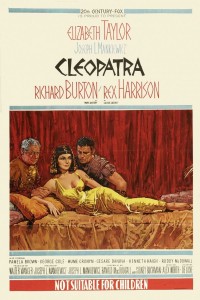 Ancients Behaving Badly: Cleopatra (2009 documentary)
Ancients Behaving Badly: Cleopatra (2009 documentary)
http://www.history.com/topics/ancient-history/cleopatra
http://www.biography.com/people/cleopatra-vii-9250984
http://www.applet-magic.com/cleopatra.htm
http://www.ancientegyptonline.co.uk/Cleopatra-Mark-Antony.html
http://www.ancient.eu/Cleopatra_VII/
http://www.pbs.org/empires/romans/empire/cleopatra.html
http://www.ancientegyptonline.co.uk/Cleopatra-Caesar.html
CAESAR – Republic to Empire
Gaius Julius Caesar 100-44 BCE
Caesar, Julius Caesar, is one of the most famous figures in history for a reason. And as you probably guessed, that reason was not an endless supply of modesty… The story of Caesar is the story of Rome – it’s transition from Republic to Empire at the height of its all consuming power, and the man who wanted it all for himself. Ironically, his exuberant success would lead to his ultimate failure. He forged Rome into an Empire and yet planted the very seed of its destruction. More polarizing than American politics, Caesar was both a hero and villain, egotistical warlord and benevolent statesmen, he truly was an enigma, to both historians and the people that knew him.
And at every turn he could not for the life of him keep it in his toga…
RISE OF THE REPUBLIC

Rome was first founded way way back in 753 BCE. Although not much is known about the early days of the city, it is known that Rome was ruled by an elected monarchy, well that is until 509 BCE when Lucius Tarquinius Superbus, the seventh and last King of Rome, ruined it for everyone by being a total d-bag. In fact Tarquinius was such a tyrannical a-hole that the people of Rome kicked his ass out of office and completely obliterated the monarchy to make way for their own form of government, creating the very first Republic just to ensure that they’d never again be at the mercy of some egotistical madman ever again.

Unfortunately it didn’t quite work out that way…
Many governments even today have been inspired by the Roman Republic’s hierarchical legal system which was in turn a variation on Athen’s Democratic system. This proto-Republican form of government was ruled by two elected consuls and the Senate which was comprised entirely of rich old, land-owning, white dudes of noble status. It was certainly a step up from your average dictatorship, but in many ways it was far from perfect. Women in Roman society had absolutely no power and plebeians, the common folk, had almost no say in politics. The Republic emphasized two things: military service and politics, which to them were one and the same.
Problem was that high political offices were highly revered, yet Romans were super paranoid and didn’t like it when someone gained too much popularity, which often lead to a constant circle of backhanded compliments, jealousy, and juicy gossip. (Sounds just like high school all over again!)

Pictured: Roman Senators
These self-serving Senators often resorted to military campaigns to resolve their disputes for selfish gain leading to a series of civil wars that threatened to tear the country apart at the seams. So pretty much exactly like 90210 but with more stabbing and slightly less estrogen…
SULLA v MARIUS
“Cry Havoc! – and let slip the dogs of war.” – Mark Antony (Shakespeare’s “Julius Caesar”)

I said ‘Romans’ not ‘Romulans’!
There were two opposing forces at work at Rome when Caesar was born, the Populares – who championed for the power of the people, and the Optimates – who believed the aristocracy should have more control. Caesar grew up during a deadly civil war between the two political factions, headed by Sulla and Marius.
 Lucius Cornelius Sulla, Marius’s rival, was a general / consul, of the Optimates movement, who marched his army into Rome to seize power and slaughtered all who opposed him. Gaius Marius, Caesar’s uncle, was a general / consul, in the Populares party, who was forced into exile in Africa. Marius returned with an army of his own while Sulla was off fighting campaigns in Greece and murdered tons of Sulla’s supporters in retaliation.
Lucius Cornelius Sulla, Marius’s rival, was a general / consul, of the Optimates movement, who marched his army into Rome to seize power and slaughtered all who opposed him. Gaius Marius, Caesar’s uncle, was a general / consul, in the Populares party, who was forced into exile in Africa. Marius returned with an army of his own while Sulla was off fighting campaigns in Greece and murdered tons of Sulla’s supporters in retaliation.
When Marius died, the old regime was overthrown by Sulla, who retook over and declared himself dictator of Rome and (once again) killed all who stood in his way. It’s said that he had hundreds assassinated and exiled.
THE DAWN OF CAESAR
“Friends, Romans, countrymen, lend me your ears…” – Antony (Shakespeare’s “Julius Caesar”)

Caesar crossing the… oh wait, wrong Caesar…
Gaius Julius Caesar claimed to have been descended from the semi-mythical Trojan war hero, Aeneas, from the works of Homer and Virgil (see: The Fall of Troy). The name ‘Caesar’ supposedly comes from one of his ancestors who killed an elephant one time. At the age of 16 (85 BCE), Caesar’s dad died, leaving him in charge of the family – and the entire province of Asia, which is a serious amount of responsibility all at once!

– Uncle Marius
It was during Uncle Marius’s short-lived reign, that he appointed his nephew, Caesar, as the high-priest of Jupiter. He also married his first wife, Cornelia, and together they had a daughter, Julia Caesaris. Young Caesar may have lost his priesthood gig when Sulla came back to town, but at least he narrowly managed to avoid the dictator’s wrath by signing up with the army, just to get the hell out of Rome.
In the military, Julius gained significant experience abroad, serving with distinction and earning the Civic Crown. He also may or may not have crossed paths with Spartacus during The Third Servile War. Upon hearing of Sulla’s death, Caesar returned home and became a prosecuting advocate, championing the commoners and gaining their respect. He soon gained legendary status both home and abroad for his tactical genius and playboy charms.
 This one time, while traveling across the Aegean Sea to Rhodes, Caesar was attacked and captured by Cilician Pirates!
This one time, while traveling across the Aegean Sea to Rhodes, Caesar was attacked and captured by Cilician Pirates!
The pirates held him ransom for forty days. When Caesar discovered he was being ransomed for 20 silver talents, he was appalled and told them he was worth at least 50. Even though he was their prisoner, J.C. won them over with his frat boy demeanor. One night when they were all drinking around a campfire, their captive / bro made an off-handed comment about brutally crucifying them all to which they all laughed uncontrollably, presumably while Caesar slowly drank his whine in silence. Turns out he wasn’t joking. Sure enough, the high ransom was paid and Caesar immediately set about raising a navy and began to hunt down the pirates one by one.
A man of his word, Caesar captured and executed every last one of them.
You just don’t fuck with Julius Caesar and live to tell the tale…

THE LEGEND GROWS
“I’ll either return a victor, or not at all.” – Caesar

“Hmmm. I think I’ll have the salad.”
In 74 BCE, Caesar lead a private army to take on Mithradates VI Eupator, the king of Pontus, just for the Hell of it. He was then elected to Tribune of the military, his first step towards political dominance and eventually rose to Quaestor, the head of Rome’s financial institutions.
 Perhaps the most impressive thing about Caesar’s career, was his ability to turn every disadvantage to his advantage. He was practically a nobody, yet made his name known through his quick wit, charm, and clever speeches. For instance, he was practically broke when he was put in charge of the gladiatorial games and yet through numerous favors and loans, he managed to turn these events into lavish performances worthy of Cirque Du Soleil (with a bit more blood and less acrobatics).
Perhaps the most impressive thing about Caesar’s career, was his ability to turn every disadvantage to his advantage. He was practically a nobody, yet made his name known through his quick wit, charm, and clever speeches. For instance, he was practically broke when he was put in charge of the gladiatorial games and yet through numerous favors and loans, he managed to turn these events into lavish performances worthy of Cirque Du Soleil (with a bit more blood and less acrobatics).
Caesar used the gladiator games to gain even more support from the citizens of Rome, which began to worry his enemies in the Senate. He went into a lot of debt to accomplish his goals, with a single-minded ferocity that it would all work out, like a high-stakes gambler going all in against a casino run by the mob.

In 63 BCE, Caesar used his newly gained political clout during his campaign for the esteemed position of Pontifex Maximus, (Head Priest) essentially the Pope of Roman paganism. He was elected through the purchase of votes, intent solely on using the position for further political gain. He could care less about traditions and honors, for Caesar it was all a means to an end…
THE TRIUMVIRATE
“The higher we are placed, the more humbly we should walk.” – Cicero

In 67 BCE two powerful adversaries were elected consul: Marcus Licinius Crassus and Gnaeus Pompeius Magnus aka Pompey the Great. Pompey and Crassus were two of the richest and most ambitious men in the world, their egos only out-shined by each other. They had joined forces previously against the might of Spartacus and his rebellion. This time though they faced opposition in the Senate.
 The Senate refused to give Pompey’s soldiers the land he’d promised them and Crassus craved military glory. Caesar approached them with a offer they couldn’t refuse. Together they combined their resources – the immense wealth Crassus had obtained through nefarious means, the military might Pompey had gathered by force, and the various connections that Caesar had collected along the way. Caesar once had Cato the Younger forcibly removed from the Senate to stop a filibuster. (Can you imagine someone pulling this in Congress?!)
The Senate refused to give Pompey’s soldiers the land he’d promised them and Crassus craved military glory. Caesar approached them with a offer they couldn’t refuse. Together they combined their resources – the immense wealth Crassus had obtained through nefarious means, the military might Pompey had gathered by force, and the various connections that Caesar had collected along the way. Caesar once had Cato the Younger forcibly removed from the Senate to stop a filibuster. (Can you imagine someone pulling this in Congress?!)
Like a union of super villains, this trio of tyrannical tycoons took the Republic hostage with their manipulative back door deals. In 59 BCE, Caesar used Crassus and Pompey to secure his own position as Consul. In return, Caesar granted legislation in their favor, getting land for Pompey’s veterans in Spain and securing Crassus’s command of the army in the East. Meanwhile, Caesar married wife #2, Pompeia.
Then in 53 BCE, their plans fell apart when Crassus foolishly got himself killed attempting to capture Parthia. Not only did he fail to defeat an enemy he outnumbered, he then retreated, leaving 4,000 Roman soldiers behind, and then got shanked under a false flag of truce (FAIL).
Soon after, Caesar and Pompey would become bitter enemies.
THE CONQUEST OF GAUL
“I came, I saw, I conquered.” – Caesar

One day Caesar up and decided he was going to conquer the world (take that Alexander the Great!). He looked over the map and noticed some spots that hadn’t quite become a part of Rome yet. He decided they could use some more Republicanism in that big chunk of blank space to the north-west of modern day Italy: the Celtic controlled region of modern day France known as Gaul.
 For the next EIGHT YEARS, (58-50 BCE) Caesar’s legionnaires marched on Gaul, killing over a million people and enslaved a million more. It technically wasn’t a genocide, only because he only killed civilians who resisted his ruthless plundering. At one point during the Gallic Wars, Caesar turned his attention towards a British invasion, but failed to conquer the Native Britons on two separate occasions before giving up and heading home.
For the next EIGHT YEARS, (58-50 BCE) Caesar’s legionnaires marched on Gaul, killing over a million people and enslaved a million more. It technically wasn’t a genocide, only because he only killed civilians who resisted his ruthless plundering. At one point during the Gallic Wars, Caesar turned his attention towards a British invasion, but failed to conquer the Native Britons on two separate occasions before giving up and heading home.
It was in Gaul where Caesar would patent the ‘divide and conquer’ tactic and even went on to write a bestseller in the third person just because. Julius didn’t sweat the fact that he was hopelessly outnumbered by axe-swinging hairy barbarians in unknown terrain. He once disguised himself as a beggar to risk crossing enemy lines in order to touch base with his comrades, which earned him mad respect. He had a way of pumping up his troops like no other Roman before him.

In 52 BCE, Vercingetorix, one of the Gallic chieftains united the tribes for one final, crazy-ass, balls-out offensive against the Roman legions at Alesia. After defeating the initial wave of cavalry, Caesar ordered a massive siege wall and trench built around the town, isolating it from reinforcements and supplies, eventually forcing Veringetorix to surrender. Veringetorix physically threw down his arms at Caesar’s feet in a show of submission.
Typically Caesar was merciful to his vanquished foes, but for some reason Veringetorix had really pissed him off, so had him imprisoned, paraded around Rome and then executed. I’m guessing it was because he was sick of trying to pronounce his name.
DICTATOR FOR LIFE
“The die is cast.” – Caesar

YOLO
In 50 BCE, Pompey got all jelly and ordered Caesar to disband his army and return to Rome. Caesar had another idea: he returned home with his army. Caesar’s legion crossed the Rubicon river in defiance of the Roman Senate and ignited a civil war against Pompey. There could be only one.
The two legendary conquerors battled it out across Europe, before Pompey hightailed it to Egypt where he was somewhat anticlimactically beheaded. While Julius was in Egypt he took a vacation with his baby mama, Cleopatra, before heading home to his (third) wife, Calpurnia, back in Rome. Yeah, he was kind of a man whore…
 In 48 BCE, Caesar was appointed dictator for a year, which was then extended into a ten year term. During his time as supreme ruler, he actually enacted quite a few surprisingly positive changes, including tax reform, the extension of voting rights, reduced congestion in the city, a police force, and a revised calendar which the current Gregorian calendar was based off of! By 44 BCE, the masses were practically worshiping him. In fact some actually were worshiping him. They renamed the month of July after him and Mark Antony even attempted to crown him a King before his groupies, but he refused, instead Gaius Julius Caesar declared himself Dictator for Life.
In 48 BCE, Caesar was appointed dictator for a year, which was then extended into a ten year term. During his time as supreme ruler, he actually enacted quite a few surprisingly positive changes, including tax reform, the extension of voting rights, reduced congestion in the city, a police force, and a revised calendar which the current Gregorian calendar was based off of! By 44 BCE, the masses were practically worshiping him. In fact some actually were worshiping him. They renamed the month of July after him and Mark Antony even attempted to crown him a King before his groupies, but he refused, instead Gaius Julius Caesar declared himself Dictator for Life.
Caesar had defeated many other of his fellow countrymen in battle, but instead of killing them, he would often pardon them and make them his allies, which was very unusual for a Roman leader. As a result, many of his former adversaries served alongside him in the Senate and as it turns out, a lot of them still had a grudge. It also didn’t help that he flaunted his fame and fortune, erecting statues in his honor, and even sat on a golden throne!

He did what???
Caesar becoming dictator was the last straw. With his new position of power he actually made a crap ton of reforms for the lower class, which rubbed the wealthy aristocrats the wrong way. They saw Caesar as a threat to their own power. All the while, he was macking on half the senate’s wives, so maybe that also played a part in what happened next…
THE ASSASSINATION
“Beware the Ides of March.” – Soothsayer (William Shakespeare’s “Julius Caesar”)

Caesar was warned of a plot against him, but shrugged it off. He refused to be accompanied by his bodyguards as he was led into the Senate on the 15th of March. His loyal friend, Mark Antony, was momentarily distracted by the conspirators long enough for Brutus and 60 other knife-wielding Senators to assassinate him in the public forum.

Julius Caesar was taken by surprise and stabbed 23 times. In the disorienting chaos, many of the assailants accidentally cut each other. Caesar’s body lay dying in a pool of blood at the foot of Pompey’s statue. According to Shakespeare’s famous play, Caesar’s last words were “E tu, Brute’?” in response to Brutus’s surprising betrayal, but he may have actually said something along the lines of, “And you my son?” – in reality though he probably didn’t get a chance to say anything, because he was too busy dying of 23 stab wounds.

“It wasn’t me.” – Brutus
Why did Brutus do it? Well for one, Caesar was porking his mom (and possibly bragging about it) so I imagine that may have been a factor.
The assassins believed they were doing the right thing by freeing the people from the grip of a tyrant, but as it turns out they couldn’t be more wrong. Rome as a whole saw Caesar as their champion. They were appalled at his brutal murder and revolted in the streets. Little did the conspirators realize, they’d actually paved the way for someone much much worse…
AUGUSTUS – SON OF CAESAR
“I found Rome a city of bricks and left it a city of marble.” – Augustus

“I Can’t help that I’m popular.” – Augustus
Yet another civil war immediately broke out in response to Caesar’s death.
Gaius Octavius, also known as Octavian, Caesar’s grand-nephew and adopted son, was chosen as the heir to Caesar’s throne. Octavian joined forces with Mark Antony to hunt down Brutus and the rest of the conspirators. Many former Senators who championed the Old Republic, like Cicero, were also executed as enemies of the state. Octavian then turned the tables against Antony who fled with Cleopatra to Egypt where they took their own lives.
Octavian then ordered the death of Caesar’s only son (with Cleopatra) Caesarion, just to ensure there would be no one to challenge his title as ‘First Citizen of Rome’. (Man, what a dick!) Octavian then changed his name to Augustus, becoming the first Roman Emperor. As Emperor, Augustus initiated Pax Romana – which was basically peace by force. Augustus was followed by a long line of psychopathic megalomaniacs like Caligula and Nero, eventually causing the decline of Rome, plummeting all of Europe into the Dark Ages.
The death of Caesar was the fall of the Republic and the rise of the Roman Empire.

ERIK SLADER
Hope you enjoyed this edition of “Epik Fails of History!”, if you have any questions, concerns, or suggestions let me know in the comments below! Also, be sure to ’Like’ EPiK FAILs on Facebook, or Follow on Twitter, and SHARE IT with your friends!
 —– More articles on Historic Failure:
—– More articles on Historic Failure:
—Sources:
“CAESAR: Life of a Colossus” by Adrian Keith Goldsworthy
“The Assassination of Julius Caesar” by Michael Parenti
“Twelve Greeks and Romans Who Changed the World” by Carl J. Richard

“Outnumbered” by Cormac O’ Brien
“Lives of the Caesars” – Suetonius
“When Rome Ruled: Killing Caesar” (2010 – History documentary)
http://www.biography.com/people/julius-caesar-9192504
http://www.history.com/topics/ancient-history/julius-caesar
http://www.pbs.org/empires/romans/empire/republic.html
http://www.roman-empire.net/republic/caesar-index.html
http://en.wikiquote.org/wiki/Julius_Caesar
ALEXANDER the Great? (Part I)
Alexander III of Macedon 356-323 BCE
“Great men are almost always bad men.” – Lord Acton
Alexander “the Great”.
His name is synonymous with ‘world-conquering-badass’.
Following in the footsteps of Gilgamesh the Great, Ramses the Great, and Cyrus the Great, Alexander wasn’t just another footnote in a long list of Greats. As far as 80’s action-hero level maniacs go, Alexander (the Great) was legit… but that doesn’t mean I’m letting him off the hook.
 In his short lifetime, Alex managed to unite most of western civilization under one banner for the first time ever, created the largest Empire the world had ever seen (which is still impressive by today’s standards), and he irrevocably changed the course of history itself, more than can be said for 99.9% of all people who have ever lived on the planet Earth.
In his short lifetime, Alex managed to unite most of western civilization under one banner for the first time ever, created the largest Empire the world had ever seen (which is still impressive by today’s standards), and he irrevocably changed the course of history itself, more than can be said for 99.9% of all people who have ever lived on the planet Earth.
What’s even more impressive than all that? He did it all before he was 30! – and then he up and died, leaving behind a massive power vacuum leading to the inevitable implosion of his entire kingdom all because he refused to write a will…
The Hellenic League
Alexander was born a good TWENTY-FOUR-HUNDRED YEARS ago – in the Greek City-State of Macedonia to King Philip II, and his fourth of eight wives, Olympia. Rumor had it that Olympia had actually been knocked up by Zeus, but Maury didn’t exist back then, so I guess we’ll never know. Not so surprising though when you consider that his mother was a priestess in a cult worshiping Dionysus (the god of alcohol), with a part-time gig as a snake charmer (pun very much intended).

Alexander’s dad, Phil, was a one-eyed warrior king with an appetite for conquest… and alcohol… mostly alcohol.
 In his perpetual inebriated state, he somehow managed to get all the Greek armies to stop fighting one another long enough to form the Hellenic League of Corinth – well everyone except for the Spartans that is. When the Spartans ignored his calls, Philip sent a message: “If I win this war, you will be slaves forever.”
In his perpetual inebriated state, he somehow managed to get all the Greek armies to stop fighting one another long enough to form the Hellenic League of Corinth – well everyone except for the Spartans that is. When the Spartans ignored his calls, Philip sent a message: “If I win this war, you will be slaves forever.”
Once again he heard nothing in return.
Annoyed, Philip texted them again with a more fervent warning: “You are advised to submit without further delay, for if I bring my army into your land, I will destroy your farms, slay your people, and raze your city.”
This time there was a response from the Spartan King – a single word that tells you everything you ever needed to know about Spartan culture: “If.”

I can only imagine a poor messenger, exhausted from running back and forth across the country approaching with a scroll of parchment, collapsing at Philip’s feet – Philip nodding in approval, assuming that the Spartans had finally come to their senses as he unrolls the parchment only to find a huge middle finger in the form of a one word taunt.
Philip decided not to call the Spartans on their bluff. Philip was smart. Philip lived to see another day.
Be more like Philip.

With the Hellenic League behind him, Philip set his single eye on Persia…
The King of Macedonia
You see, for years Alexander’s dad was all pumped about invading the Persian Empire in some extremely-delayed revenge for the burning of Athens, a good century and a half earlier (see: The Battle of Thermopylae). Only problem was getting the man power behind him to do just that. Not only did the Persians have one of the greatest armies on the planet, they even outsourced to Greek mercenaries to beef up their already staggering numbers.

LOL
Meanwhile, with both his parents being too busy to actually raise him, Alexander was tutored by none other than the famous Greek philosopher Aristotle – as in the very same Aristotle that picked up where Socrates and Plato left off. Just think, that would be like Neil deGrasse Tyson home schooling you. It was during this time that young Alexander discovered the works of Homer: The Odyssey and Illiad, becoming inspired by the legend of Achilles. (see: The Fall of Troy)
Alexander was left in charge of the country for the first time, while his dad was away on business, at the ripe old age of 16, an age where Jäger-bombs and back-flipping naked into a swimming pool seem like a good combination.

Just imagine this guy being handed the keys to the nation’s entire military might…
New King on the Block
At his father’s wedding to his latest wife, Eurydice, some jackass gave a toast in which he basically called Alexander a bastard and his mom a whore. Instead of sticking up for his son, Philip nodded in agreement. This led to a drunken conflict between Alexander and his dad, which ended with his exile from the kingdom.
 Then in 336 BCE, Philip randomly died – after being stabbed in the chest by one of his bodyguards. Well random in that he didn’t expect it, not so random with the cause of death being his bodyguard’s knife protruding from his chest and all.
Then in 336 BCE, Philip randomly died – after being stabbed in the chest by one of his bodyguards. Well random in that he didn’t expect it, not so random with the cause of death being his bodyguard’s knife protruding from his chest and all.
The assailant fled the scene, but on his way to his getaway horse, he tripped over a vine, fell on his face, and got stabbed to death by the rest of his coworkers. With the King’s demise, Alexander took on the family business. Philip’s assassination is often attributed to Alexander’s mom, Olympia – who may have orchestrated her son’s rise to power.
Upon becoming King at 20, Alexander started his career by executing any and all naysayers. He even had his cousin murdered just in case. Instead of winning over his political rivals with his charming personality and good looks, Alexander decided to make a brutal example of any Thracians, Illyrians and Greeks that weren’t 100% sold on the young leader, except for the Spartans, they got a pass.
In order to really drive home the point that he was in charge now, Alexander marched his army 240 miles to the gates of Thebes, in record time, after hearing some toga-wearing bros had challenged his right to rule. To be fair, Alexander did give them a chance: letting them know that it was not too late for them to change their minds.
 When the Thebans started making obscene gestures in response, Alexander let his soldiers do the talking. Within hours, his army had brutally killed at least 6,000 citizens, enslaved 30,000 more and burned the entire city to the ground. They never stood a chance.
When the Thebans started making obscene gestures in response, Alexander let his soldiers do the talking. Within hours, his army had brutally killed at least 6,000 citizens, enslaved 30,000 more and burned the entire city to the ground. They never stood a chance.
The Athenians and Peloponnesians were just about to rally behind the Thebans, but quickly changed their minds. Alexander had a gift for rallying soldiers to follow him, was a brilliant tactician, and had an innate sense of vision, but when it came to the actual governing of the peoples he conquered… well, he just didn’t. Instead of using this opportunity to strengthen ties with his allies and start building towards a better future for the united people of Greece, Alexander immediately declared war on the most powerful entity in the ancient world: Persia.
With the combined might of all Greece behind him, Alexander grabbed his sword and sandals, donned his helmet and alongside his cavalry rode towards the heart of the Persian Empire…

ERIK SLADER

—– More articles on Historic Failure:
A SPARTAN’S TALE, XERXES FAILS
Hope you enjoyed this edition of “Epik Fails of History!”, if you have any questions, concerns, or suggestions let me know in the comments below! Also, be sure to ’Like’ EPiK FAILs on Facebook, or Follow on Twitter, and SHARE IT with your friends!
—Sources:
“Alexander the Great Failure” by John D. Grainger
“The Death of Alexander the Great” by Paul Doherty
“The Book of Ancient Bastards” by Brian Thornton
“Outnumbered” by Cormac O’Brien
Dan Carlin’s “Hardcore History” (podcast)
Alexander the Great – Creating the Legend (Bio Documentary)
All Time Greatest Commanders: Alexander the Great (History Channel Documentary)
Battles BC: Alexander – Lord of War (documentary)
“Alexander” (2004) – Directed by: Oliver Stone, starring: Colin Farrell
http://www.history.com/topics/ancient-history/alexander-the-great
http://www.historyofmacedonia.org/AncientMacedonia/AlexandertheGreat.html
http://www.historyofmacedonia.org/AncientMacedonia/PhilipofMacedon.html
http://www.biography.com/people/philip-ii-of-macedon-21322787
http://www.biography.com/people/alexander-the-great-9180468
http://www.ancientbattles.com/Issus/Issus.htm
http://burnpit.legion.org/2012/10/battle-gaugamela-alexander-great-defeats-king-darius-persia
Top 10 Historical Drunks!
History is saturated with the exploits of highly intoxicated individuals. And while there are countless stories of completely hammered world leaders stumbling into the history books, it’s not usually something that you’d find in a high school text book. Vincent Van Gogh was an absinthe addict, Buzz Aldrin was probably tipsy on the moon and Benjamin Franklin once said that “Beer is living proof that God loves us and wants us to be happy.”
Here are some of the highlights: The drunkest of the drunk…
“Sometimes too much to drink is barely enough.” – Mark Twain
10. Ögedei Khan (1186-1241)

Ögedei, son of Genghis Khan, was a disappointment. Granted, he never stood a chance: taking over the family business from one of the world’s greatest conquerors. He was always destined to live in his father’s shadow, but his alcoholism didn’t really help his image. Ogedei mostly rode on the wave of his father’s success. Although he did manage to hold the Mongolian Empire together, he also made quite a few mistakes during his 12 year rule.
 His greatest challenge: staying sober.
His greatest challenge: staying sober.
Unfortunately there was no 12 step program for another several hundred years.
Ogedei’s drinking got so bad that his brother, Chagatai, ordered an official to keep an eye on the drunk Khan. It didn’t help. After being pressured into cutting back on his excessive alcoholic intake (even by Mongolian standards), he conceded and agreed to reduce the number of cups he drank a day.
Miraculously he managed to keep his word, well sorta.
You see, he actually did reduce the number of cups he drank a day, but he also switched to a XXL Super Gulp-size pitcher.

Ogedei’s cup of choice
After partying it up all night with Abd-ur-Rahman, the Khan’s liver gave up for good. Following his death, the position shifted between his brothers over the next couple decades before his nephew, Kublai Khan inherited the Mongol Empire.
9. Ludwig Van Beethoven (1770-1827)
 Ludwig Van Beethoven was without a doubt one of the greatest composers to ever live. He was also a drunken asshole.
Ludwig Van Beethoven was without a doubt one of the greatest composers to ever live. He was also a drunken asshole.
Sure he’s a classical music legend, a pioneer whose symphonies will echo through the ages, but for the people who knew him personally, Beethoven was notoriously antisocial, completely paranoid and consistently rude. None of which was helped by his frequent visits to the local tavern – at all hours of the day.
Between creating some of the most beautiful compositions this side of the Milky Way, the German composer was a life-long womanizer who was hated by all his servants and frantically moved 71 times. As he aged, his erratic behavior and mood swings became worse as he began to lose his hearing. He went completely deaf after composing his 9th Symphony in 1824, ending his career and leaving him nothing left to do but to booze it up.
He died a few years later from what many assume were liver complications. (I’m sensing a theme here)

8. President James Buchanan (1791-1868)

There are a dozen American Presidents who could make this list: Chester A. Arthur, Martin Van Buren and Franklin Pierce to name a few. (Hell, Andrew Johnson was sworn in drunk!) That said, James Buchanan could probably drink all those guys under the table – in a row.

Pierce’s slurred words after hearing that he was not nominated for reelection.
Buchanan didn’t do much with his presidency other than drink. In fact, he’s often blamed for the American Civil War that followed his stint as Prez, probably because he was too busy getting shit-faced. Buchanan reportedly got furious upon discovering that the White House was stocked with a limited supply of small champagne bottles. Every single night, he drank cognac and a couple other bottles of… something with a high alcohol content. Every Sunday, like clockwork, he would head to the local distillery and pick himself up a 10 GALLON jug of whiskey!

Buchanan: Now that’s a man with a drinking problem.
The crazy thing is, that he supposedly didn’t show any signs of intoxication in public. That said, the years of hard drinking definitely took a toll on his body: his immune system was so jacked up that he got gout not once, but twice!
(Read more about Presidential Fails here!)
7. Alexander the Great (356-323 BCE)

Yup, that one.
Alexander III of Macedon was many things: conqueror, visionary, male model. But there’s one thing ancient scholars tended to look over – he was a raging alcoholic! Just like his father, Philip, Alexander often had an over flowing whine goblet in hand. Some historians even argue that many of his most brave and cunning moves were actually the result of a stupidly drunk imbecile who just got insanely lucky.
One time at one of Alexander’s keggers, he had a drinking contest with his soldiers. When all was said and done, 42 people had died of alcohol poisoning…

Good times…
Alexander’s most tragic moment in life was when he killed his best friend, Cleitus, in a drunken rage. It’s also worth mentioning that Alexander the Great’s mysterious death may have been the result of alcohol poisoning or ingesting poisoned alcohol. Either way, his habit kicked him.
(Click here for more on Alexander the Great)
6. Emperor Wenxuan of Northern Qi (529-559)
Chinese Emperor, Gao Yang, began his reign as a benevolent ruler, with a focus on tax reform and an increased military. Unfortunately, that all changed a few years later when the Emperor went off the deep end. Yang started drinking excessively, indulging in multiple girlfriends and just being an all around dick to everyone in the kingdom. Not saying it was the alcohol, but… it was the alcohol.

This ‘Mad Emperor’ would get so freaking drunk in fact, that he didn’t even recognize the Empress, his own wife! One time, she scolded him for drinking too much, so he threatened to marry her off to a barbarian. This did not go over well as you can probably imagine (hell hath no fury and all that). She became so furious that he cowered in fear. Worried that he’d be exiled to the imperial dog house, Gao Yang got on his hands and knees in an attempt to appease her and make her smile. Instead, he drunkenly knocked her out of her chair.
 Upon sobering up the next morning, he realized what he’d done and attempted to throw himself into a fire, only to be saved at the last minute by his forgiving wife. He swore to never drink again… 10 days later he fell off the wagon into a giant vat of wine and became far worse than ever before.
Upon sobering up the next morning, he realized what he’d done and attempted to throw himself into a fire, only to be saved at the last minute by his forgiving wife. He swore to never drink again… 10 days later he fell off the wagon into a giant vat of wine and became far worse than ever before.
You see, Gao was a mean drunk with no consequences – which led him to killing multiple people in his court in his increasingly frequent drunken rages. It became so bad at one point that his Prime Minister, Yan Yin, started gathering prisoners for cannon fodder. It might also be worth mentioning that the women of his clan were ordered to sleep with him. When one concubine refused, he killed her.
It didn’t stop there though. This one time he asked a woman in the street what she thought of the Emperor. She was honest and told him that “He is so crazy that he really cannot be considered a Son of Heaven.” The Emperor nodded and then had her beheaded. Another time he had an affair with Consort Xue’s sister, whom he then murdered during an argument. He brandished her severed head before his officials at brunch the next day.
As fate would have it, the Mad Emperor soon died of liver poisoning from his years of consistent binge-drinking. Not a single person shed a tear at his funeral. Another cautionary tale for the history books.

5. Ulysses S. Grant (1822-1885)
Really this whole list could be American Presidents. That said, I would be remiss to exclude the legendary drinking habits of Ulysses S. Grant. Seriously, Buchanan and the rest are all light weights compared to this scruffy, booze-breathing lumber-sexual.
Throughout the American Civil War, General Ulysses S. Grant drank constantly. (Really though, considering it was the bloodiest war in American history, could you blame him?) Even during a time when most people consumed more alcohol than water, Grant gained a reputation for drinking excessively.

After the Mexican-American War, Ulysses joined a proto AA group called the Sons of Temperance, because even he recognized that he had a problem. Not that it did much good, because at his next Army post, Grant immediately resumed his usual routine of getting black-out drunk in public.
This particular habit did become problematic with his superiors, especially when he tried to sue a shop keeper for his drunken ass tripping over himself on an icey sidewalk and another incident involving a brawl over a cheap bottle of wine. After one particularly epic night of getting completely wasted, he woke up in the barracks the next morning, half dressed, still heavily intoxicated and smelled like he’d gone swimming in a distillery – which led to him getting booted out of military service.

General Grant – probably reaching for a flask…
But then the Civil War happened and the Union was kinda desperate. Even so, they were skeptical of letting Grant back into their ranks. After he begged to fight for his country, they relented and threw him in with the other losers of the 21st Illinois Infantry Regiment. Colonel Grant, against all odds and expectations, actually managed to whip the unit into shape, leading to his promotion as Brigadier General.
As he rose through the ranks, so did his less-than-stellar drinking reputation, but this time, the Army couldn’t really argue with the results. According to historian James McPherson, “In the end his predisposition to alcoholism may have made him a better general. His struggle for self-discipline enabled him to understand and discipline others.”
Despite his extreme alcoholic intake, Grant earned his place in history as a war hero in his victory against Robert E. Lee and the Confederates. Abraham Lincoln even said, “I wish some of you would tell me the brand of whiskey that Grant drinks. I would like to send a barrel of it to my other generals.”
Ulysses S. Grant later went on to become President himself, but isn’t exactly regarded as a memorable Commander-in-Chief (more on that in a future segment). He did however have a hand in piecing together the shattered remains left over from the Civil War and Andrew Johnson. He spent most of his later years on the verge of bankruptcy and chugging brewskis with his bro Mark Twain.

4. Sir Winston Churchill (1874-1965)
If you’re a WWII buff, than there’s no doubt you’ve heard of Winston Churchill – and his love affair with brandy. The British Prime Minister took on Hitler, won a Noble Peace prize and is considered one of the greatest leaders of the 20th century. He was also a larger-than-life, over-the-top drunk at all hours of the day.

Regardless of his impressive achievements, Churchill was far from perfect. He started each and every day with cocktail of water and Johnny Walker – a habit he picked up while serving in India, where the water was unsafe to drink, and that was just the beginning of the day. In 1899, he was a correspondent on the front lines of the Second Boer War in South Africa, where it’s said he packed 36 bottles of wine, 18 bottles of scotch and 6 bottles of brandy.
 During WWI, as the British First Lord of Admiralty, he oversaw the disastrous Dardanelles Campaign against the Ottomans in 1916 – a failure that would weigh heavy on his heart for the remainder of his years. It prepared him for the incredible losses to come and many more years of heavy drinking.
During WWI, as the British First Lord of Admiralty, he oversaw the disastrous Dardanelles Campaign against the Ottomans in 1916 – a failure that would weigh heavy on his heart for the remainder of his years. It prepared him for the incredible losses to come and many more years of heavy drinking.
At a royal banquet in Saudi Arabia, King Ibn Saud asked Churchill why he wouldn’t eat. His reason: there was no alcohol served. The Saudi King was confused. Churchill explained that his rule in life was to drink before, during and after each meal. William Manchester described Churchill’s habit: “it reaches its peak late in the evening after he has had two or three scotches, several glasses of champagne, at least two brandies and a highball.”
In 1942, Stalin invited Churchill to Moscow, where the two discussed what to do with those Nazi douche-bags. Apparently Churchill out drank the Soviet dictator and earned his respect, leading to an alliance against the Axis Powers. Through his pump-up speeches on the radio, Winston Churchill kept the people of the UK hopeful during the German bombing raids, working with FDR to get the supplies they needed to fight back and was instrumental in leading the Allied forces to victory in World War II.
Churchill may have had more red wine than blood in his veins, but he still lived to be 90 years old!

Peace out dudes!
3. Ernest Hemingway (1899-1961)

Nobel-Prize winning author, WWI veteran and hardcore liqueur enthusiast. Throughout his adventurous life, Ernest Hemingway published 15 books, was married 4 times and survived 2 plane crashes, but it’s his drinking habits that are the stuff of legend. There is a long history of writers and substance abuse: Edgar Alan Poe, Lord Byron, Mark Twain, Ian Fleming, Roald Dahl, Hunter S. Thompson, etc, BUT none of them hold a candle to Hemingway.
 Hemingway, an American journalist, wasn’t much of a drinker in his early years, but that all changed after the war in Europe. (Can’t say I blame him either, considering World War One was easily one of the darkest chapters in all of human history.) When he was hospitalized in Italy, he charmed the nurses into bringing him beer. From there he made his way through the entire selection of fine Italian wines… and women. Count Emanuele Greppi took Ernest under his wing and showed him some of the ‘finer things’ in life. Which in this case meant brothels and bars, lots and lots of bars.
Hemingway, an American journalist, wasn’t much of a drinker in his early years, but that all changed after the war in Europe. (Can’t say I blame him either, considering World War One was easily one of the darkest chapters in all of human history.) When he was hospitalized in Italy, he charmed the nurses into bringing him beer. From there he made his way through the entire selection of fine Italian wines… and women. Count Emanuele Greppi took Ernest under his wing and showed him some of the ‘finer things’ in life. Which in this case meant brothels and bars, lots and lots of bars.
Hemingway once wrote, “Don’t bother with churches, government buildings or city squares. If you want to know about a culture, spend a night in its bars.” It didn’t stop there either, after returning to the states, he kept on drinking like there was no tomorrow. When prohibition happened, he just moved up to Canada and later made his way back across the Atlantic to Paris, France. Spending most of his days writing and drinking and most of his nights drinking in taverns. He even drank with famous fascist dictator, Benito Mussolini!
Prior to the Cuban Revolution, Hemingway spent much of his later years in Cuba, dealing with high blood pressure, severe depression and liver disease – none of which was particularly helped by his excessive drinking habits. Unfortunately, despite all his accomplishments, his demons got the better of him, leading to his suicide in 1961.

2. Boris Yeltsin (1931-2007)
Oh Boris, you drunkard you.

Russian President Boris Yeltsin was instrumental in the dismantlement of the Soviet Union. Despite that historical footnote, he’s better known in most circles as one of the drunkest politicians in recent history. This former Communist really knew how to party.

It’s hard to find a photo of this guy not drinking!
Yeltsin was the first democratically elected Russian leader in over a thousand years. He embraced capitalism and spearheaded numerous reforms, but his tenure was also marred by economic depression, a significant spike in crime following the collapse of the USSR and a series of international incidents that were the direct result of him getting absolutely shit faced.
In 1992, during a negotiation with Kyrgyzstan, the pregaming Russian President decided it was a good time to practice playing the drums with a pair of spoons… on the Kyrgyz President’s head…
Then in 1994, he tagged along as part of a Russian delegation in Berlin to oversee the dismantlement of Russian forces in East Germany. At which point the entire world witnessed the drunken antics of Boris Yeltsin on live television – footage of: Boris dancing like a crazy person, stumbling into a parade and mumbling an incomprehensible speech.

After knocking back several drinks in 1997, Boris once again made his country proud at a conference in Stockholm, by publicly ranting about how Swedish meatballs somehow look like pro tennis player, Bjorn Borg, right before nearly falling off the stage. He then started going off on an unscripted tangent about banning the worlds nuclear weapons, at which point Russian officials grabbed the mic from him.
But nothing compares to his trip to Washington DC. One late night in 1995, while he was visiting with President Bill Clinton, Yeltsin snuck past his bodyguards after a long day of binge drinking. Secret Service agents later discovered Boris, half naked on the White House lawn, attempting to hail down a cab for a 3AM pizza run.

You’re welcome America.
1. Peter the Great (1682-1725)
What is it with these Russian rulers?

Peter the Great (Pyotr Alekseyevich), or as he called himself: Emperor of All Russia and Great Father of the Fatherland, is often considered one of Russia’s most beloved monarchs (unlike Ivan the Terrible). He was responsible for numerous reforms and helped bring Russia into the modern world… well the modern world of the early 18th century that is. As Czar, Peter reformed the military, improved science education, founded Saint Petersburg, made trade with Western Europe and out drank everyone in Russian history.
Peter (the Great) was one of the first and only Russian monarchs to travel across Europe on a diplomatic mission to strengthen Russia’s allegiance with its allies. This Grand Embassy was led by Peter himself in disguise, a disguise as Peter Mikhailov – an alias that fooled no one, especially considering he was slightly shorter than Shaquille O’Neal – at an insane 6 foot 8 inches – during a time when most people were 5’4″.
Throughout his European tour, Peter was a freaking rock star – throwing some of the wildest parties the world had ever seen. The vodka chugging czar even brought with him an entourage of drunken nobles and groupies known as “The All Joking, All Drunken Synod of Fools and Jesters” – an elite club dedicated to getting hammered until the early hours of the morning.

In 1698, Peter was invited to England where he studied the British Navy’s advances in ship building. During this time, Peter and his gang stayed at Sayes Court, an Elizabethan mansion. The properties owner, John Evelyn was horrified to discover the estate completely trashed! The beautifully furnished manor and historic gardens were reduced to rubble: trampled hedges, windows shattered, carpet ruined, paintings used as target practice, and a smoldering pile of 50 wooden chairs used in a bonfire.

Despite his near constant inebriation, Peter was an effective ruler, if not a bit eccentric. Among many of the changes he brought to his people, perhaps the most bizarre decision of his entire reign was instituting a beard tax…
And he lived happily ever after…? Haha – No.
 It wasn’t all fun and games for this Russian party animal. Between 2 unhappy marriages, Peter tragically lost most of his 11 kids. Some of his people considered him tyrannical and his violent temper was only made worse by his extremely excessive drinking. And then there’s his destructive relationship with his estranged son, Alexei Petrovich Romanov.
It wasn’t all fun and games for this Russian party animal. Between 2 unhappy marriages, Peter tragically lost most of his 11 kids. Some of his people considered him tyrannical and his violent temper was only made worse by his extremely excessive drinking. And then there’s his destructive relationship with his estranged son, Alexei Petrovich Romanov.
Alexei was kind of a hippie, so he and his father never really saw eye to eye. The two had a worse relationship than Luke Skywalker and Darth Vader. Alexei resented his father for the way he treated his mother and refused to take his place as Czar. He went into self exile to pursue his own interests. Peter became paranoid that his son was raising a rebellion against him (which he wasn’t). When Alexei returned home, Peter had him locked up, interrogated, convicted of high treason and tortured to death.
A few years later Peter “the Great” succumbed to a brutally nasty infection from gangrene in his bladder. On his deathbed Peter asked for a pen and paper. He wrote out, “Leave all to…” and then he died.
So there you have it, 10 of the drunkest dudes of history. Do you agree with this list? Let me know in the comments below! (Oh and please drink responsibly.)
ERIK SLADER
Thanks for reading! If you’re a fan of the blog, be sure to listen to the Epik Fails of History podcast and check out my all new “EPIC FAILS” book series – available now wherever books are sold!
Want to help support “Epik Fails of History”? Click below to give a dollar a month! Your valued support will enable me to continue writing, maintain the website, do more research and so much more…
Alexander (the Great) – Part One
Presidential Pros and Cons – Part Two
Sources:
lordsofthedrinks.com/drunks-that-made-world-history
http://www.biography.com/people/peter-the-great-9542228#!
https://www.britannica.com/biography/Ogodei
http://www.biography.com/people/ulysses-s-grant-9318285
http://www.52composers.com/beethoven.html
http://www.history.com/topics/british-history/winston-churchill
http://www.independent.co.uk/news/uk/was-alexander-a-great-alcoholic-1537664.html
http://www.obsev.com/food/6-historical-figures-were-probably-drunk-most-time.html
http://www.biography.com/people/ernest-hemingway-9334498
http://www.cracked.com/quick-fixes/4-international-incidents-caused-by-drunk-boris-yeltsin/
http://www.history.com/topics/us-presidents/james-buchanan
http://www.dailymail.co.uk/news/article-1215101/Drunk-Boris-Yeltsin-outside-White-House-underpants-trying-hail-cab-wanted-pizza.html
http://www.edline.net/pages/SJBCathedralSchool/Classes/1213_05346001/Assignments/Crazy_Emperors_of_China
Alexander (the Great) – Part II
Alexander III of Macedon 356-323 BCE

Continued from Part One: the origin of Alexander the Great
Alexander vs the World
In 333 BCE, Alexander first earned his reputation. It was at the Battle of Issus where Alexander truly proved himself. Much like the President from ‘Independence Day’, Alexander fought alongside his men against unfathomable odds and came out on top. After his initial incursions into Persian territory, Darius III decided to deal with this Alexander punk personally. Much to his surprise, Alexander turned out to be more than a minor nuisance.

“Oh shit!”
Against all odds, Alexander’s rag tag band of 40,000 Greek Hoplites took on an army of 100,000 Persians on their own turf and beat them into submission. It was as though Alexander had unlocked ‘God Mode’ IRL. Alexander (the Great) threw out the rule book and charged headfirst at the enemy line, like a hyped-up raccoon with Rabies.
Darius was absolutely shocked at the ferocious brutality that Alexander unleashed on his men. During the chaos, Alexander’s men managed to capture Darius’s mom, wife and two daughters, while Darius himself was forced to retreat to Babylon in desperation where he surrounded himself with a few thousand reinforcements. Alexander didn’t care, nothing would stop him now. Like a T-800 on a mission, Alexander could not be bargained or reasoned with. Drenched in the blood of their comrades and exhausted from their long journey, the only thing that kept the Macedonians going was Alexander’s sheer will.
 Alexander’s goal was clear: to conquer the entire Persian Empire! He declared himself the “King of All Asia” – which is pretty baller, but also kinda funny when you consider that he didn’t even know that China existed. Following the crushing victory at Issus, Alexander the G followed it up with the Siege of Tyre before taking on (Persian-controlled) Egypt!
Alexander’s goal was clear: to conquer the entire Persian Empire! He declared himself the “King of All Asia” – which is pretty baller, but also kinda funny when you consider that he didn’t even know that China existed. Following the crushing victory at Issus, Alexander the G followed it up with the Siege of Tyre before taking on (Persian-controlled) Egypt!
After conquering the fortified city of Gaza with ease, the Egyptians welcomed Alexander with open arms, glad to be rid of the Persians. The Egyptians crowned Alexander the new Pharoah of both Upper and Lower Egypt and even claimed he was the reincarnation of both Osiris and Ra! It was there that Alexander began plans to build the city of Alexandria – the first of many. (Seriously, the guy built a lot of cities that he named after himself, think Trump, but with sword and sandals)
After hanging out in Egypt for a while, he finally decided it was time for a rematch with Darius, so rallied his troops and marched through Syria toward the heart of the Persian Empire…

“LEEEEERRROOOOOYYY JENNNKIIINNNSSS!!”
Alexander v Darius: Round 2
The year was 331 BCE. The armies of Alexander and Darius stared one another down across the plain. The two faced off at the Battle of Gaugamela. Alex’s army was split into three factions in an attempt to envelope his enemy from multiple angles, but Darius was ready for him with one of the largest armies the world had ever seen.

Darius had all of his men spread out in a long line with him at the center. Alexander had infantry on the left and led his cavalry on the right, while the rest of his army hung back. After defeating waves of Persian chariots, Alexander led a wedge formation straight for Darius himself in one of history’s craziest, most balls out charges! During the frantic fighting, Darius’s chariot driver was impaled by a javelin, which led to Darius’s army thinking their leader had been slain! The Persian line devolved into pure chaos as Darius fled the battle, barely surviving the onslaught as Alexander’s forces made quick work of what was left of Darius’s army.
Alexander vowed to chase Darius to the ends of the Earth. Darius planned to raise another army and strike back. Fate had something else in store entirely. Darius demanded loyalty, but his men ultimately betrayed him. After hunting Darius for months, Alexander found his body in a creek. Darius was dying – stabbed by one of his closest allies, chained to a cart and bleeding out all over his fancy robes. Alexander, pissed at Darius’s commanders for stealing his glory from him, swore to avenge his fallen enemy… that he had previously swore to kill.
In 330 BCE, Alexander the Great and his army marched into Babylon, the capitol of the Persian Empire, unopposed! It was there that Alex and his bros found more wealth than they ever thought possible! Alexander claimed that Darius had named him as his successor with his dying breath. As the new ruler of the Persian empire, Alexander gained an untold fortune of loot and became the wealthiest and most powerful man of the ancient world, over night!

After paying his troops, Alexander sent a massive sum of money back home – six times the annual income of Athens! Meanwhile, Alex and his men were living large in Babylon. In fact, the burning of the Persian city of Persepolis may have actually been the result of a party that got waaay out of hand. Alexander embraced decadence and just generally stopped giving a shit all together.

The Dude abides.
During this time, Alexander’s new “King of Kings” title started to go to his head. After a couple years, flaunting around in Persian robes and adopting their customs, Alexander’s Greek troops started to whisper behind his back, worried that he was no longer the hero they’d worshiped, he’d gone native.
But things turned tragic at a particularly drunken banquet in 328 BCE…
Alexander kills his BFF
Alexander and his best friend, Cleitus the Black, got into an argument that turned violent. Alex told Cleitus he was going to send him in charge of a contingent of former Greek mercenaries to take care of some nomads in Central Asia. Cleitus (the man who saved Alexander’s life at the Battle of Granicus), was insulted at the thought of being sent to the middle of nowhere in charge of second-rate soldiers. Cleitus got all riled up and gave Alexander a piece of his mind.
Alexander ignored him and went on and on about how much better he was than his father. Cleitus shot back – saying he was half the man his dad was and that all his achievements were thanks to him. Alexander yelled for his guards in anger, but they decided to sit this one out. Alexander threw an apple at Cleitus’s head and then grabbed for his dagger. Alexander’s buddies confiscated the dagger and held him back. The party goers managed to separate the two angry drunks. Alex drunkenly attempted to sound the call to arms. Right as he managed to get his hands on a javelin, Cleitus popped his head back into the room with another come back ready, but before he could utter “And another thing!” – Alexander speared him through the chest.

After drunk stabbing his bestie, Alexander went into a deep depression and began to drink even more. All the while, Alexander’s army continued to party hard in Babylon until 327 BCE, when he finally pulled himself out of his drunken stupor and decided it was time to start conquering again…
Alexander goes to India
 Alexander the Great marched his forces East towards the unknown, in an attempt to spread his rule to the furthest reaches of the world: India. This time however, he bit off a little bit more than he could chew. Alexander and his men faced off against war elephants, fierce warriors and a harsh tropical climate, far from home, in a strange new land they had no bearing on. During his campaign through India, Alexander got himself wounded on a couple of occasions: taking a dart to the shoulder and later an arrow to the ankle. During the Battle of Hydaspes, Alexander was nearly defeated and even lost his loyal horse.
Alexander the Great marched his forces East towards the unknown, in an attempt to spread his rule to the furthest reaches of the world: India. This time however, he bit off a little bit more than he could chew. Alexander and his men faced off against war elephants, fierce warriors and a harsh tropical climate, far from home, in a strange new land they had no bearing on. During his campaign through India, Alexander got himself wounded on a couple of occasions: taking a dart to the shoulder and later an arrow to the ankle. During the Battle of Hydaspes, Alexander was nearly defeated and even lost his loyal horse.
After the battle, Alexander appointed the defeated Indian general, Porus, as governor of the region and then named a city after his fallen horse. When Alexander arrived at the edge of the Ganges River, ready to take on the powerful combined might of the Gangaridai Empire of Bengal and the Nanda Empire of Magadha, his men finally threw in the towel. Alexander’s army refused to cross the river and follow him any further. They were tired, some of them hadn’t seen their families in years, and they faced certain doom if they followed Alexander any further on his suicidal quest for grandeur.
Alexander’s general, Coenus, persuaded Alexander to change his mind and turn back, reinforcing that his men “longed to again see their parents, their wives and children, their homeland”. On the long 60-day march back through the Gedrosia Desert, Alexander lost three-quarters of his army to heat and exhaustion.
Alexander the Great Failure?
Alexander (the Great) was far ahead of his time championing progressive ideals like freedom, and education.
He also was responsible for the deaths of hundreds of thousands of innocent people in a vain conquest for glory…

Lex Luthor approves.
Then, on June 11th, 323 BCE, Alexander the Great died unexpectedly, at the height of his power at just 32 years old. Unfortunately, he didn’t leave a proper successor to the throne…
Which meant that the those closest to him spent the rest of their lives fighting over the Kingdoms of Alexandria like hungry, hungry hippos fighting over the last chicken leg at the bottom of a bucket of KFC. Ultimately, Alexander himself was responsible for the eventual (inevitable) collapse of the vast empire he spent his entire life building. There’s a lot of speculation surrounding the death of Alexander the Great, some think he was poisoned, but more likely he poisoned himself with weeks upon weeks of binge-drinking.

Despite all his glorious conquests, it could be argued that Alexander was a colossal failure, ultimately leaving behind the world a more chaotic place than the one he was born into. Much of his legend can be attributed to egotistical self-promotion. Alexander had a vision of the future, but it never came to fruition. Although his Macedonian Empire may have had an early expiration date, from its ashes a new world power emerged that would forever shape the course of the future: Rome.
ERIK SLADER
Thanks for reading! If you’re a fan of the blog, be sure to listen to the Epik Fails of History podcast and check out my all new “EPIC FAILS” book series – available now wherever books are sold!
—– More articles on Historic Failure:
A SPARTAN’S TALE, XERXES FAILS
—Sources:
“Alexander the Great Failure” by John D. Grainger
“The Death of Alexander the Great” by Paul Doherty
“The Book of Ancient Bastards” by Brian Thornton
“Outnumbered” by Cormac O’Brien
Dan Carlin’s “Hardcore History” (podcast)
Alexander the Great – Creating the Legend (Bio Documentary)
All Time Greatest Commanders: Alexander the Great (History Channel Documentary)
Battles BC: Alexander – Lord of War (documentary)
“Alexander” (2004) – Directed by: Oliver Stone, starring: Colin Farrell
http://www.history.com/topics/ancient-history/alexander-the-great
http://www.historyofmacedonia.org/AncientMacedonia/AlexandertheGreat.html
http://www.biography.com/people/alexander-the-great-9180468
http://www.ancientbattles.com/Issus/Issus.htm
http://burnpit.legion.org/2012/10/battle-gaugamela-alexander-great-defeats-king-darius-persia
SPARTACUS
The Third Servile War 73-71 BCE

“When a free man dies, he loses the pleasure of life. A slave loses his pain. Death is the only freedom a slave knows. That’s why he’s not afraid of it. That’s why we’ll win.”
– Spartacus (Kirk Douglas, 1960)
Spartacus is the legendary story of a gladiator who rebelled against his masters, who led a slave uprising against the might of the Roman military and died fighting for his freedom. It’s an inspiring allegory of hope and bravery in the face of certain doom.
It’s also true.
During the later years of the Roman Republic, gladiator games had become all the rage. To the Roman citizens of the time, these were the equivalent of modern sports events: crazed fans would flock to arenas where they would cheer on their favorite competitors. The main difference of course was that these athletes didn’t always make it out alive. All for the amusement of the masses.
(Think football with decapitations.)

No, not those guys…
The Roman gladiators were slaves who trained, fought, and died to appease the crowds. They were often armed with lethal weapons and pitted against one another in an arena. Gladiators were occasionally ‘recruited’ criminals or prisoners from conquered armies and trained under a ludus, which was basically gladiator school: less of a gym and more of a Mortal Kombat style prison camp.

Most of the students never, um… ‘graduated’.
The man who came to became known as ‘Spartacus’ was a Thracian soldier, who became a prisoner of war. He was sold to Lentulus Batiatus and brought in chains to the Roman city of Capua, where he was forced to swear allegiance to the ludus and took an oath to be burned, chained, beaten and killed by an iron weapon. Think Mad Max: Beyond Thunderdome.

“Two men enter, one man leaves.”
In the ludus, the gladiators trained with swords, shields, nets, tridents, and clubs. Among these fellow gladiators were two Gallic slaves called Crixus and Oenomaus. It’s also worth noting that many of these gladiators were celebrities, some even endorsed products and most of them probably used stage names, like WWE’s Macho Man Randy Savage.

The name ‘Spartacus’ was probably a reference to the Greek Spartans who held their ground against the might of the Persian Empire during the Battle of Thermopylae. Spartacus quickly became a heavyweight champion and slowly began to gather supporters, both in the arena and outside of it. Between death matches, Spartacus and his allies began to plan their escape.
 When the opportunity finally came to make a break for it, someone betrayed them (because of course they did). Spartacus and about 70 other gladiators decided to drop their elaborate escape plan and improvise. They stormed the kitchen and grabbed anything sharp enough to stab their way out with and began a long montage of Tarantino-esque executions.
When the opportunity finally came to make a break for it, someone betrayed them (because of course they did). Spartacus and about 70 other gladiators decided to drop their elaborate escape plan and improvise. They stormed the kitchen and grabbed anything sharp enough to stab their way out with and began a long montage of Tarantino-esque executions.
After fighting their way to freedom, the slave rebellion raided several wagons full of gladiator weapons and armor. Instead of making a run for it to retire in some faraway land, Spartacus, Crixus and Oenomaus banded together and started a movement. What started as a small revolt, soon turned into a full slave uprising. Spartacus and his men plundered supply lines along the Roman roads, freed and recruited slaves and eventually organized into an army of thousands!
 The Roman legions had been busy off fighting in Spain when Spartacus’s rebellion began to gain momentum. Rumors began to circulate that Spartacus was planning an assault on Rome itself, which made the nobility nervous. In response, the Roman senate sent in praetor Gaius Claudius Glaber and a Roman militia to stop the rebellion in its tracks.
The Roman legions had been busy off fighting in Spain when Spartacus’s rebellion began to gain momentum. Rumors began to circulate that Spartacus was planning an assault on Rome itself, which made the nobility nervous. In response, the Roman senate sent in praetor Gaius Claudius Glaber and a Roman militia to stop the rebellion in its tracks.
Spartacus set up camp on Mount Vesuvius (the volcano that would later destroy Pompeii) where they were besieged by Glaber’s force of 3,000 soldiers. Glaber intended to block off the route and starve them out, but had underestimated the ingenuity of his enemy. Spartacus’s men used vines to repel down the mountainside, behind Glaber’s army where they made short work of them. I just wish I could see Glaber’s face when he saw these ‘uncivilized barbarians’ repelling down the mountainside like Seal Team Six operatives in a Tom Clancy novel.
The rebels continued to face down impossible odds and repeatedly came out on top. It seemed as though Spartacus was unstoppable. So did they ultimately lead the rebels to victory, end slavery, and live happily ever after?

After hearing that Spartacus had taken down two whole legions, the Roman senate began to sweat. They chose Marcus Licinius Crassus to bring down Spartacus once and for all. He was given 8 legions – a total of 40,000 Roman soldiers! Meanwhile, another up and coming Roman politician, Pompey (the Great), was heading back from Spain. Crassus was determined to bring Spartacus down before his rival got the chance to show him up.
 During this time, Spartacus attempted to gain passage to Sicily to gain reinforcements. They made a deal with some Cilician pirates, who immediately betrayed them. Spartacus’s men retreated, but were met by Crassus’s forces as they attempted to route them south and cut off their supplies.
During this time, Spartacus attempted to gain passage to Sicily to gain reinforcements. They made a deal with some Cilician pirates, who immediately betrayed them. Spartacus’s men retreated, but were met by Crassus’s forces as they attempted to route them south and cut off their supplies.
Upon getting intel that Roman reinforcements were en route, Spartacus decided to go before Crassus in an attempt to bargain. It didn’t go well.
Spartacus returned to his men with the bad news. During a pump-up speech to his troops, he had his horse brought out to him. He drew his sword and slew his own horse. Spartacus proclaimed that if they won this day, he would have hundreds of horses to choose from, but if they should fail, he wouldn’t need one.
Turns out, he didn’t need the horse after all…

Spartacus fell at the Battle of the Silarius River, along with 36,000 rebels. Crassus captured and crucified 6,000 former slaves as a warning to others. Pompey came in with the clean up crew and crucified another 5,000 more who attempted to flee. (Romans really liked to crucify people.) Gladiator games continued in Rome for another 400 years.
Spartacus’s uprising may have ultimately failed, but the legend of his rebellion lives on and continues to inspire those fighting against the injustices of their own time, all these centuries later.
Erik Slader
Thanks for reading! If you’re a fan of the blog, be sure to listen to the Epik Fails of History podcast and check out my all new “EPIC FAILS” book series – available now wherever books are sold!
Sources:
“The Spartacus War” by Barry Strauss
“Spartacus: Blood and Sand” (2010-2013)
https://en.wikipedia.org/wiki/Spartacus
http://www.vroma.org/~bmcmanus/spartacus.html
https://www.history.com/news/history-lists/10-things-you-may-not-know-about-roman-gladiators
THE FALL OF CONSTANTINOPLE
The Fall of Constantinople 1453
For over a thousand years, Constantinople stood as the center of the known world, a crossroads between ‘East’ and ‘West’. This ancient city was a prized jewel for all manner of conquerors. This great city was an indestructible fortress with +100 defense. Like an underdog turned undefeated champion on a winning streak, Constantinople miraculously withstood wave after wave of attack, with a few exceptions: the Huns, the Mongols, the Persians, the Seljuks, you name it… well, that is until the year 1453 rolled around and the entire kingdom fell like a house of cards thanks to one dumb ass who left the gate open, but I’m getting ahead of myself.

BYZANTIUM
Way (way) back in 657 BCE, Byzantium was founded by the Ancient Greeks. Several hundred years later it was conquered by the Roman Empire (you know those pompous toga-wearing guys with an affinity for vomitoriums). Then one day, in 324 CE, Emperor Constantine was bored so decided to rename Byzantium after himself. Constantine established ‘Constantinople’ as the brand spankin’ new capitol of the now ‘Holy’ Roman Empire. This turned out to be a VERY bad move, seeing as Constantinople was on the outskirts of the Empire, whereas Rome was dead center, making it very hard to manage. This didn’t last long, because it was a stupid idea to begin with.
 The New and Improved Byzantine Empire expanded throughout the East under Emperors Theodosius and Justinian. During the 8th and 9th centuries, religious icons were banned by both Leo III and Constantine V, leading to the destruction of dozens of works of art ironically deemed sacrilege. This would ultimately become one of the main factors of division between the East and West Roman Empires, eventually leading to THE GREAT SCHISM of 1054 when Pope Leo IX excommunicated the Orthodox Church of Constantinople over petty differences in Christian belief and practice, like whether or not to use leavened or unleavened bread during mass.
The New and Improved Byzantine Empire expanded throughout the East under Emperors Theodosius and Justinian. During the 8th and 9th centuries, religious icons were banned by both Leo III and Constantine V, leading to the destruction of dozens of works of art ironically deemed sacrilege. This would ultimately become one of the main factors of division between the East and West Roman Empires, eventually leading to THE GREAT SCHISM of 1054 when Pope Leo IX excommunicated the Orthodox Church of Constantinople over petty differences in Christian belief and practice, like whether or not to use leavened or unleavened bread during mass.
In 1202, Pope Innocent III called for a Fourth Crusade to take Jerusalem ‘back’ from the Muslims and maybe conquer Egypt while they were at it (at the time there was a truce, but they just wanted the Holy Land all to themselves). Somewhere along the way the Crusaders were diverted to Constantinople, leading to one of the most ironic twists in history: Without warning, the Christian Crusaders attacked the Christian City of Constantinople.

And so the Christian crusaders on a mission to free Jerusalem, instead ransacked the greatest Christian city the world would ever see. The Crusaders attacked shouting “Holy Sepulcher!” which roughly translates to: “The Tomb in which Jesus Christ, our Lord and Savior was buried and then resurrected on the third day!!!” The defending Greeks of Constantinople responded with their own battle cry, “Jesus Christ conquers! Hoorah!!!” The defenders of Constantinople were completely caught off guard by this unexpected friendly fire and fell prey to three days of pillaging. Sacred relics were smashed, priceless art was destroyed and the city’s most precious treasures were looted by the greedy mercenaries. The Byzantines later reconquered their city from the Latin Empire in 1261, but now that they were surrounded by enemies, with their previous wealth depleted, Constantinople would never again be the same…
RISE OF THE OTTOMAN EMPIRE

No… not those ones…
Two factions of the Islamic faith, the Sunni and the Shi’a have been at war since the days after Muhammad when the Muslims became divided into warring tribes. In the midst of this never-ending conflict, during the 13th Century, Estugral, Khan of the Kayi Tribe (of the Sunni Oguz Turks), fled from the Mongol hordes of Persia and raised a Gazi force under the Sultan of Rum. His son, Osman I, founded the Osmanli dynasty which has since come to be known as the Ottoman Empire, a powerful nation that ruled for over 600 years. The Ottomans quickly took out the short-lived Serbian Empire and made the Balkans their bitch. Then the Ottoman Turks spread throughout the Middle East, absorbing other cultures as their own, but they lacked a central capitol in which to rule from. Enter: Mehmed II – the young Ottoman Sultan who set his sights on the once great city of Constantinople.
“Only one thing I want: give me Constantinople!” – Mehmed the Conqueror
Mehmed II v Constantine XI

Mehmed the Conqueror’s Dating Profile Pic
The Byzantine Emperor, Constantine XI (yes, the eleventh! – they weren’t very original in the baby naming department back then), attempted to placate the young Sultan to no avail. Mehmed began by cutting off Constantinople’s supply lines from Venice, claiming that Constantine had broken the truce between their people with little to no evidence, just a shitty excuse for war.
Before attacking, Mehmed issued Constantine an ultimatum, “I will as the law commands there, you the citizens of this greatest city, harm neither your families nor your belongings, if you voluntarily surrender the city to me.”
Constantine responded with, “To surrender the city to you is beyond my authority or anyone else’s who lives in it, for all of us, after taking the mutual decision, shall die out of free will without sparing our lives.”
Constantine ignored the threat, confident that this attempted siege would fail just like all those that came before them, but Mehmed brought something new to the table that changed everything: gunpowder!
The Ottomans forged sixty cannons and assembled 100,000 troops to take down the Capitol of the Byzantium Empire.
The Siege Begins!
On April 6th, 1453, the grand army of Turks rolled in and swarmed around the tightly defended perimeter of the city. The war drums were soon followed by a relentless succession of cannon balls blasting into the stone walls. As Turkish soldiers attempted to scale the walls they were met with both arrows to the face and boiling hot oil. They immediately focused all their firepower on one specific segment of the fortress in an attempt to burrow through.
“The explosion made all the walls of the city shake, and all the ground inside, and even the ships in the harbor felt the vibrations of it. Because of the great noise, many women fainted…” – Nicolo Barbaro
While both sides exchanged volleys of arrows, Mehmed’s navy went around the back. Although Constantine’s men had cleverly blocked off the entrance to the harbor, the Turkish ships went the long way: over land. Sicilian ships were sent in as reinforcements and attacked with their secret weapon: Greek Fire!

Pictured: A Medieval Flame Thrower
Greek Fire was a viscous flammable mixture, a mysterious substance that burns on water, originally developed by Athenian Alchemists, and later discovered by the Byzantines from the library of Alexandria. It proved to be rather effective against enemy ships. Meanwhile, the siege dragged on for FIFTY freakin’ DAYS!

The struggle is real…
Two months later…
Things were starting to look hopeless, for both sides.
Between a freak hailstorm and an eclipse, the defenders of Constantinople began to get superstitious of the ominous symbolism.
 The Turks weren’t having much luck bombarding the heavily fortified walls of the city, but as the days went on, the citizens of Constantinople began to run low on supplies. Mehmed (like Wily Coyote) was ever persistent and had several back up plans to boot. Seeing as their initial plot to tear down the walls wasn’t working, they decided to dig under them. When that didn’t work, they starting work on a massive wooden tower to go over the wall.
The Turks weren’t having much luck bombarding the heavily fortified walls of the city, but as the days went on, the citizens of Constantinople began to run low on supplies. Mehmed (like Wily Coyote) was ever persistent and had several back up plans to boot. Seeing as their initial plot to tear down the walls wasn’t working, they decided to dig under them. When that didn’t work, they starting work on a massive wooden tower to go over the wall.
The Ottomans constructed it overnight and began work on a make-shift bridge over the moat to wheel the siege tower in place. That night, some of the city’s defenders snuck out and lit a powder keg at the bottom of the tower. The rickety tower was engulfed in flame and collapsed faster than a lopsided game of Jenga, taking dozens of Turks with it.

Mehmed’s men were very close to giving up and calling it a day, but then on May 29, 1453 – someone made a very dumb mistake: a single unguarded gate was carelessly left open. As the Ottomans made one last attempt to scale the walls of the city, and the exhausted defenders beat them back for four hours straight, one of the Turks saw that the gate was slightly ajar. He presumably did a double take, before letting his buddies in on it. It didn’t take long for fifty Ottomans to flood through the entrance. The defenders of Constantinople were overwhelmed, many of them dropped their weapons and ran from their posts, screaming for their mothers, with a steady stream of urine trailing behind.
“The blood flowed in the city like rainwater in the gutters after a sudden storm, and the corpses of Turks and Christians were thrown in the Dardanelles, where they floated out to sea like melons along a canal.” – Barbaro
As the sun rose that morning, the Ottoman banner was raised in victory. 30,000 captured – 4,000 killed.
Once the walls had been breached, the game was over.

Like running out of quarters while going for the world record…
Constantinople becomes Istanbul
Constantine’s last recorded words were: “The city is fallen and I am still alive!” He then, presumably ripped off his imperial garments, grabbed a sword, and alongside his soldiers charged into the mass of incoming Turks.

Mehmed: 1 Constantine: 0
The Sultan rode into the conquered city on a white horse, dismounted in front of the Hagia Sophia Church, one of the most astonishing building’s ever constructed. Mehmed kneeled down and poured dirt over his turban as a sign of humility. When he entered the sacred sanctuary, he saw his men chipping away at the beautiful Christian iconography and immediately ordered them to stop. The Hagia Sophia was to be preserved and transformed into the Aya Sofya mosque.
The Pope didn’t even find out about the city’s defeat until a month later. When Pope Nicholas V called for a Tenth Crusade to take back Constantinople, the response was ‘meh’ at best. You see, England and France were still licking their wounds from beating each other half to death during The Hundred Years War, the German Emperor, Frederick III, was broke, Hungary was in disarray, and King Alfonso of Spain had enough of his own problems maintaining his own territory. The Ottomans saw this as a good opportunity to wipe out what remained of the Byzantine Empire, so they did.
Meanwhile the city prospered under Mehmed’s rule, as the new capital of the Ottoman Empire, Istanbul. Christians and Jews were allowed to keep their religions and were protected as long as they paid their taxes. The Jewish community in particular had far fewer restrictions under the Ottoman Empire than they did throughout Western Europe.
Interesting side note: under the Ottoman Empire, the city of Istanbul became renowned for having more than 1,400 public toilets!

The Hagia Sophia Mosque, today.
Mehmed the Conqueror then went on to challenge Dracula himself to a bout of fisticuffs.
The Ottoman Empire was later disintegrated during the First World War and gave way to the Republic of Turkey in 1922.
The main reason The Fall of Constantinople is so vital to our history and the development of our modern world is that it directly led to the Italian Renaissance! You see, following the conquest of the city, the Byzantine immigrants to Venice brought with them the scientific knowledge of Arabian scholars and mathematicians that sparked the end of the Dark Ages and a new unprecedented era of enlightenment. Furthermore, Istanbul closed off Western Europe from the East, forcing Europeans to expand into uncharted territories (see Columbus). Historians consider this the final chapter of the Late Middle Ages and the official end of the original Roman Empire, nearly a millennium after the collapse of Rome itself.
It would seem that nothing lasts forever…
ERIK SLADER
Hope you enjoyed this edition of “Epik Fails!”, if you have any comments, questions, concerns, or suggestions let me know in the comments below! Also, be sure to ’Like’ EPiK FAILs on Facebook, or Follow on Twitter, and SHARE IT with your friends!
 —– More articles on Historic Failure:
—– More articles on Historic Failure:
—Sources:
“The Fall of Constantinople” by Ruth Tenzer Feldman
“History’s Turning Points: The Siege of Constantinople” – History Channel
http://www.thenagain.info/webchron/easteurope/fallconstantin.html
http://www.shsu.edu/~his_ncp/Turkey2.html
 DIDIUS JULIANUS 193-193
DIDIUS JULIANUS 193-193

 The “Battle” of Karansebes
The “Battle” of Karansebes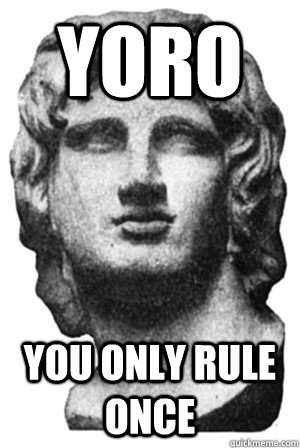 JULIUS CAESAR
JULIUS CAESAR
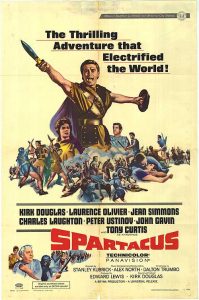 Top 5 Worst Roman Emperors
Top 5 Worst Roman Emperors